Worth



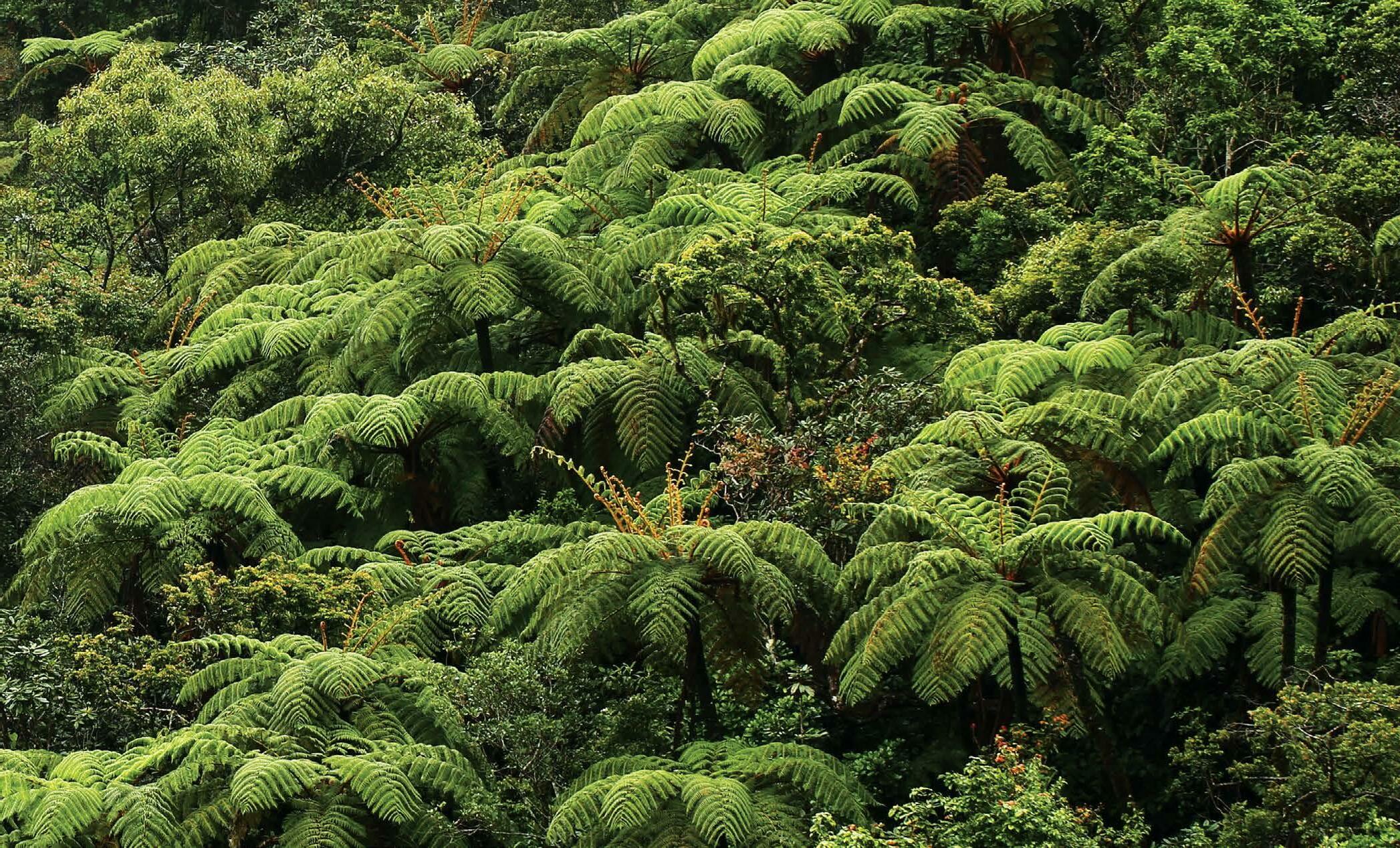 How Sri Lanka’s tea plantation companies are helping biodiversity thrive
How Sri Lanka’s tea plantation companies are helping biodiversity thrive
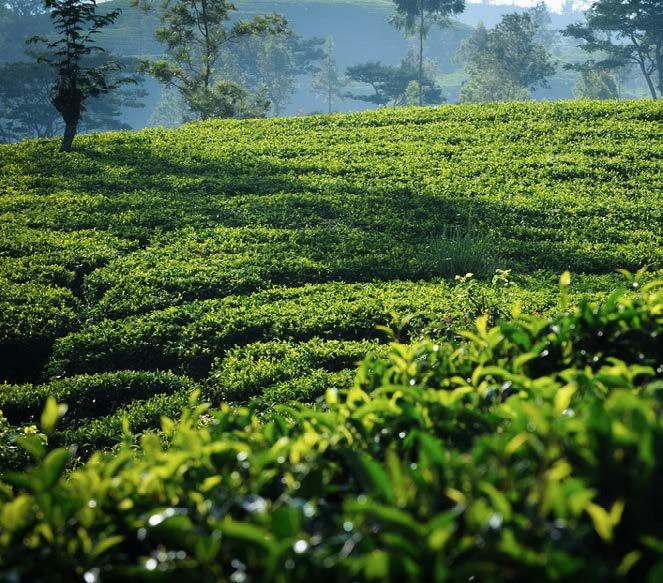
KP
How Sri Lanka’s tea plantation companies are helping biodiversity thrive


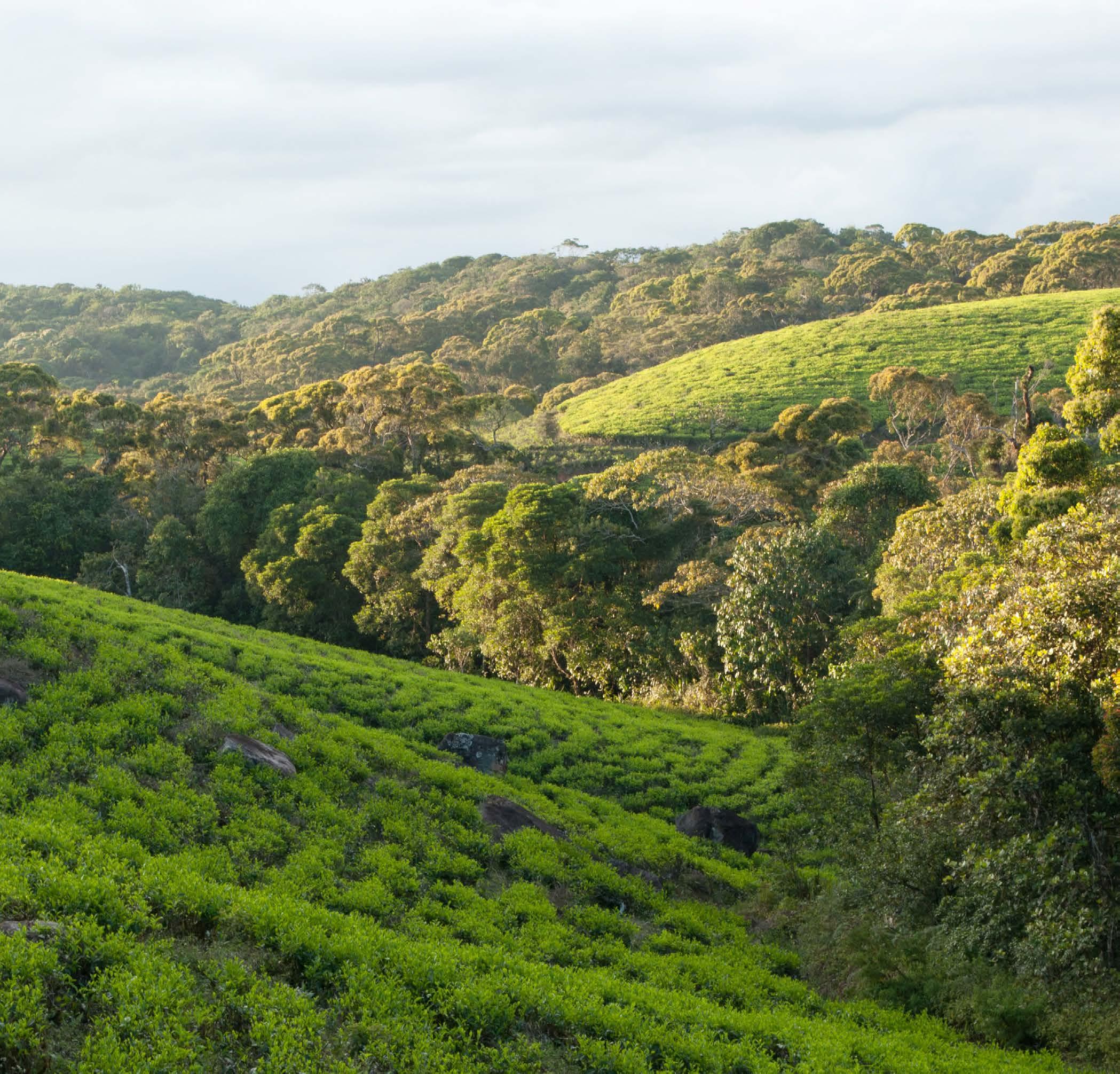 Writer
Writer
Niresh Eliatamby is a multi-disciplinary professional with over 25 years in Management, Marketing and Communications. Over the years, he has worked with a large number of major brands in Sri Lanka’s corporate sector.

As Media Manager of Sri Lanka Cricket, he played a key role on the organizing team of the 2002 ICC Champions Trophy in Sri Lanka. He has closely supported the marketing communications efforts of SriLankan Airlines for more than 15 years. He was also Resident Editor of Destination Sri Lanka tourism magazine and recently served as Associate Editor of the Ceylon Today newspaper.
During his early career he specialized in Investigative Reporting and War Reporting. He has served in various capacities in the print and electronic media, starting his career at the Sunday Times and going on to be Defence Correspondent for the Island for more than a decade. He worked for some time as a journalist for the United States news agency
Associated Press (AP) covering Sri Lanka’s civil war.
He can be contacted at niresh@eol.lk
Ceylon, as Sri Lanka was once known, is famous for her tea and spices. Our island has always been blessed, and as Venetian traveller Marco Polo wrote in the 13th Century, it is the finest island of its size in the world. The observations of travellers in ancient times and the quality of our famous produce have the same genesis, for it is Sri Lanka’s unique natural heritage that accounts as much for her beauty, variety, as for the excellence and natural goodness of her tea, the sweetness of her fruits, and the desirability of her spices.
This publication – the first from Biodiversity Sri Lanka - aims to present initiatives being undertaken on our tea estates, largely driven from the perspective of improving biodiversity conservation. This book attempts to address the broader benefits from conservation initiatives whilst emphasizing those related to restoring ecological health to productive land systems. Furthermore it highlights the key role which responsible private sector land managers can play in delivering significant and positive environmental outcomes.
As one of 34 global hotspots, Sri Lanka’s biodiversity at the species, genetic and ecosystem level is one of the richest in the world. This diversity is heavily concentrated on a relatively small island which due to its geographic location and prevailing climatic conditions creates high levels of endemism. Thus, tea estates, being semi-natural plantations, are expected to play a significant role in the conservation of the country’s biodiversity. Recent developments of product diversification, agro forestry and protection of natural areas as minireserves are increasing the contribution which the estates can make. In total, some 20% of the estate areas are under natural vegetation or plantation forestry, contributing to carbon capture, crop pollination, pest control, enhancement of biodiversity and soil and water conservation. Thus emphasis on protecting natural ecosystems and conducting activities to restore degraded ecosystems have become critically important to ensure healthy agricultural systems.
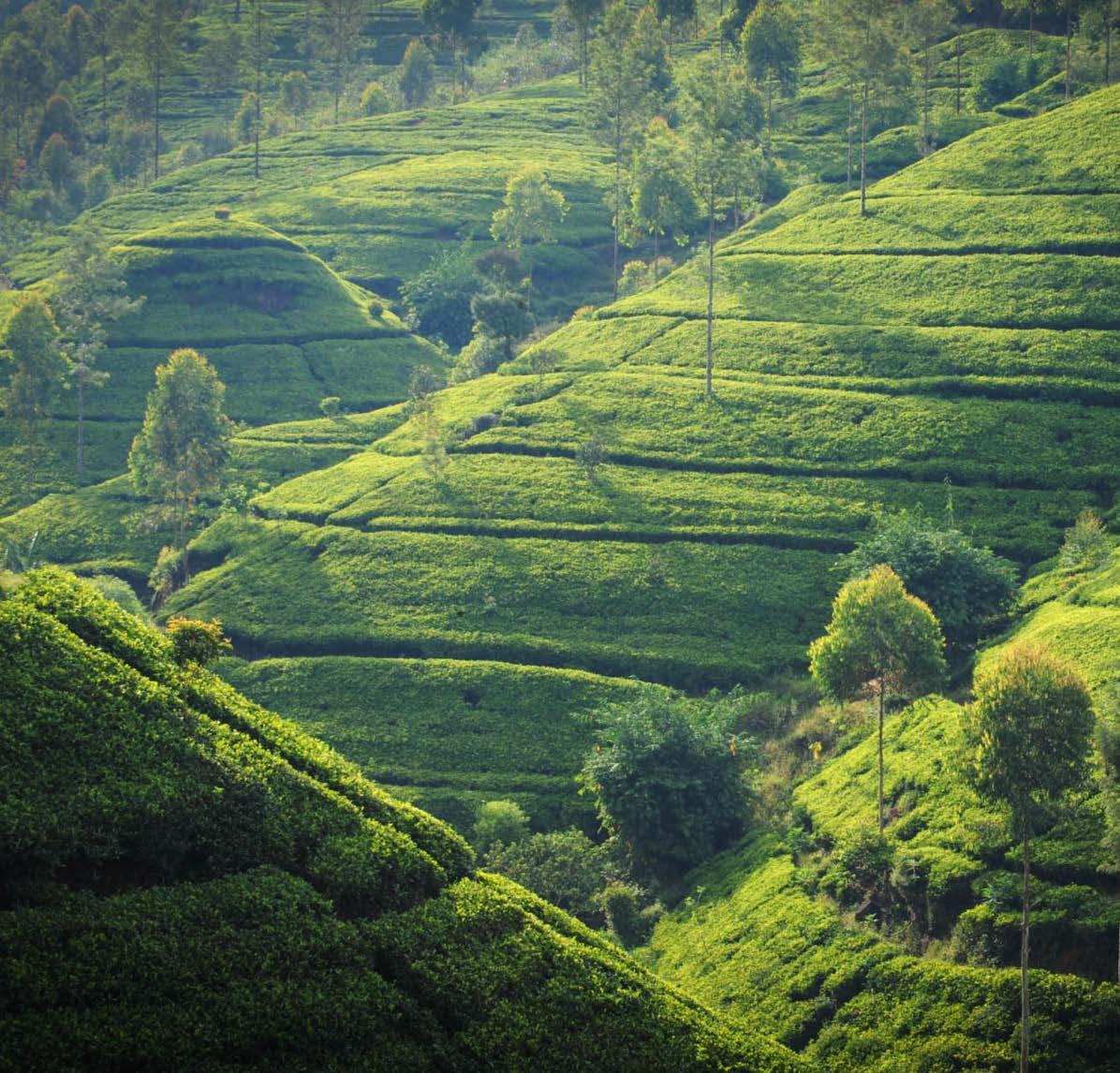
Capturing a series of illustrative case studies aiming to foster learning from experience involving productive landscapes and the role of business, we expect this publication to significantly raise awareness and further stimulate partnerships with Government Ministries and their agencies, universities, civil society and key resource sector industries in helping to enhance transboundary conservation, species conservation, protected area management, ecosystem restoration, social and economic policy formulation and governance.
We hope that you will enjoy its contents and be inspired and motivated to conserve and appreciate our unique heritage.
C Fernando Chairman, Board of Directors
Biodiversity Sri Lanka

Biodiversity Sri Lanka wishes to acknowledge the advice and continuous guidance provided by its Board of Directors and its Plantations and Agribusiness Standing Committee throughout the process of putting this publication together. Thank you for the support and encouragement you have lent our team.
To the companies that believed in our mission and gave us the opportunity to visit their tea estates and be inspired by the initiatives highlighted in this publication, we would like to extend a special thank you. Further appreciation goes out to Professor Devaka Weerakoon, who has supported our work from our inception and Dr. Herath Manthrithilake, both of whom took the time to contribute two wonderfully insightful articles to this publication.
Our gratitude is extended to Mr. Niresh Eliatamby, for making these hidden stories come alive and to Mr Kasun Pradeepa for his expertise and patience in designing and laying out this publication.
To our Initiating Partner, Dilmah Conservation, our grateful thanks for providing much needed guidance during the preparation of this publication and for the generous sponsorship in designing, laying out and printing. Without you this publication would not have been possible.
We do hope you enjoy our effort and be inspired by our Island’s natural beauty and rich biodiversity and become keenly aware of the measures being taken to protect it.
www.biodiversitysrilanka.org

Dilmah owes its success to the quality of Ceylon Tea. In recognizing the significant interconnection of its business with the natural environment, Dilmah embarked on a dedicated mission to conserve nature and to sustain the environment within which it operates. In 2007, Dilmah Conservation was established as a business objective with the aim of protecting the environment and encouraging a harmonious coexistence between man and nature.

The promise made by Dilmah Founder Merrill J. Fernando that business should be a matter of human service, where the profits accrued are used for the benefit of people and the environment that they depend on, are deeply ingrained in the work of Dilmah Conservation. Since then, Dilmah Conservation has engaged in promoting sustainable environmental and social development initiatives gearing towards mainstreaming sustainability, encouraging research, conserving and protecting Sri Lanka’s wealth of biodiversity, habitat and ecosystem restoration, empowering indigenous communities, endorsing sustainable livelihoods, and supporting environmental and nature education.
Dilmah has commissioned studies in all its tea estates to formulate biodiversity and habitat management plans, outlining strategies for the protection and conservation of biodiversity on each estate. Work on bioremediation programmes to evaluate the potential use of biochar as a multi-beneficial soil enrichment to address deteriorating soil conditions common to many Sri Lankan plantations. A Climate Change Field Research Station being constructed will constitute a solid base in climate related field research essential in agricultural systems. Sri Lanka’s first private sector led Urban Arboretum and Cultural Information Center in Moratuwa is expected to raise education and awareness on the benefits and significance of protecting forests and other natural systems.
Dilmah Conservation sees collaboration across various stakeholder groups as vital if global sustainability challenges in tea are to be addressed at the scale and speed that is required. It is thus committed to taking a leadership role in major cross industry initiatives. Collaboration is essential to achieve widespread, meaningful and lasting change. Dilmah Conservation takes pride in supporting Biodiversity Sri Lanka in making this publication a reality.

How Sri Lanka’s tea plantation companies are helping biodiversity thrive

Biodiversity Sri Lanka was created in response to a demand for the establishment of a facility where businesses can come together to share experiences and best practices, learn from their peers and voice their needs and concerns, aiming to strengthen the link between the business sector and the conservation community.
Being a solely private sector driven platform, the only one of its kind in the country, Biodiversity Sri Lanka promotes dialogue and exchanges knowledge, information and methods on biodiversity conservation amongst the corporate sector. It aims to help businesses find solutions to adjust their activities, ensuring fair income and sustainable growth, whilst providing benefits for biodiversity and ecosystems.
A member of the Global Partnership on Business and Biodiversity established under the Convention on Biological Diversity, Biodiversity Sri Lanka is linked to international centers of excellence and networking bodies such as the United Nations Global Compact and the Word Business Council for Sustainable Development, building and strengthening ties and sharing experiences with key global partners in a wide array of business sectors.
The backbone of Biodiversity Sri Lanka is its members. Membership is open to Sri Lanka-based businesses ranging from national to multinational companies and Small and Medium Enterprises. Leading corporates, all with high standards of environmental custodianship, have backed the Platform, by becoming its Patron and General Members.
Membership brings in a wide array of benefits, in the areas of biodiversity conservation and environmental protection. As a part of the services offered, Biodiversity Sri Lanka has developed a comprehensive technical database, carrying information on expertise available in diverse and relevant subject areas. Conservation related requirements of businesses are channeled to the intellectual mainstream and academia through this database. Knowledge of current best practices is widely disseminated, recognizing outstanding corporate contributions to biodiversity conservation.

The organization and hosting of networking and learning events is a medium by which Biodiversity Sri Lanka encourages dialogue and sharing of best practices whilst harnessing the potential for collaborative work. Events provide opportunities for Members to showcase their activities connecting them to wider local and international networks and fora.
Projects remain the cornerstone of Biodiversity Sri Lanka. While some of the projects are being implemented with member support and involvement, several internal projects are being carried out catering to national priorities, using the best technical expertise in the land. The creation of a biodiversity credits accrual mechanism for Sri Lanka which addresses the non-carbon benefits associated with reforestation and restoration activities, the formulation of a biodiversity-related project ranking scheme and an online project bank based on national priorities for the benefit of Members are some of these.
Biodiversity Sri Lanka connects with its membership and the wider public through its website, www.biodiversitysrilanka.org, constantly featuring up to date news, events and notifications, elaborating on different aspects of global and national conservation significance. Social media channels - Facebook, LinkedIn, Flickr and YouTube, are all linked up to its website ensuring easy access to those preferring such modes of communication. BSL also produces a bimonthly newsletter, dedicating them to preselected themes of critical biodiversity importance.
Sector-based standing committees catering to the specific biodiversity needs of the Banking and Finance, Engineering and Construction, Plantations and Agribusiness, and Tourism and Hospitality sectors have been established. In order to display the biodiversity commitment of the Plantations sector, this compendium of best biodiversity stories has been created. Its intent is to serve as an inspiration to others striving to implement and disseminate best biodiversity practices within all sectors, ensuring the longer term conservation and management of Sri Lanka’s unique biodiversity heritage.
In Sri Lanka, tea is much more than just a beverage; it is indeed a way of life. It is so deeply embedded in our psyche, in our roots, that life cannot be imagined without a cup of hot tea. For generations, this has motivated people to internalize the tea experience and externalize their social awakening. As a leader in exporting renowned Ceylon Tea to the world, it is hoped that this Compendium of best biodiversity stories will serve to raise awareness amongst all stakeholders on the leadership and formidable role taken by the Sri Lankan plantation sector in conserving our unique biodiversity whilst engaging in its core business of growing, processing and packaging world class teas.

Biodiversity Sri Lanka takes pride in presenting this to you!
Atop a 4,000-foot mountain on Halgolle Estate in the Kegalle District, Kelani Valley Plantations is fiercely guarding a rare tree species - Gordonia speciosa with its brilliantly beautiful and exotically fragrant crimson flower - a symbol of the success of the company’s biodiversity conservation efforts.
 KELANI VALLEY PLANTATIONS PLC Halgolle estate, Kegalle district
KELANI VALLEY PLANTATIONS PLC Halgolle estate, Kegalle district
Atop the Wewelthalawa Forest Reserve on Halgolle Estate blooms a brilliant crimson flower, the size of a man’s hand. It is as rare as it is beautiful. Endemic to Sri Lanka, it is found only at certain higher elevations, in forested areas of the country’s wet zone. Protecting this species has become of paramount importance to officials of Kelani Valley Plantations PLC.
“A very rare species that is endemic to Sri Lanka, Gordonia speciosa is almost extinct. We believe that the largest number of specimens are found on Halgolle Estate, and we consider it our duty to protect them,” said the General Manager - Marketing and Corporate Affairs of Kelani Valley Plantations PLC.

Gordonia speciosa has become a symbol of success of the conservation efforts of Kelani Valley Plantations PLC, which in a pioneering venture has established a large private forest reserve at the top of a 4,000-foot mountain - the Wewelthalawa Forest Reserve. Especially nurtured by Kelani Valley Plantations PLC, including forested areas totaling 634.41 hectares, the reserve is home to many unique species.
Ironically, Halgolle Estate is just 2½ hours’ drive from Colombo via the A4 ColomboRatnapura highway, turning off at Yatiyantota up the B482 Yatiyantota-Nawalapitiya Road, a distance of only about 60 kilometres directly east of the capital as the crow flies. Colombo is in fact quite visible from the top of Halgolle, and one can even discern individual buildings in the city’s skyline.
A very rare species that is endemic to Sri Lanka, Gordonia speciosa is almost extinct.
Gordonia ceylanica

Kelani Valley Plantations PLC has been actively working to protect the fauna and flora on its landholdings over the last decade, with detailed biodiversity surveys of all its estates being carried out by scientists from as far back as 2008. On Halgolle Estate itself, researchers have even gone to the extent of placing camera traps to record nocturnal species. The company has a total of 26 estates - 12 low country estates in the Kelani River basin mainly in the Kegalle district of the Sabaragamuwa province and 14 upcountry estates in the Nuwara Eliya district of the central province.
Kelani Valley Plantations owns a total land area of 3,000 hectares on all its estates, of which Halgolle Estate is one of the largest, containing 1,196.21 hectares. Halgolle is indeed a remarkable haven for biodiversity. The estate has diversity in its elevation, with the lower reaches at 90 feet above mean sea level, rising to the upper divisions at 4,000 feet. Thus, the consequent range of biodiversity - both fauna and flora - is impressive.
Hallgolle estate is comprised of 4 divisions – Wewelthalawa, Halgolle, Punugala and Ullswater. Its main crop is tea, with significant fields of rubber trees in the lower areas, plus small amounts of other crops such as coconut. Originally a coffee estate, it had also cultivated cardamom.
Known in Sinhala as “Rathu Mihiriya” or “Rath Mihiriya”, Gordonia speciosa is 1 of 4 Gordonia species in Sri Lanka, all of which are endemic to the country, the others being G. ceylanica, G. dassanayakei and G. elliptica. All 4 are rare, found only in the montane forests of the highlands, with G. speciosa being the most difficult to find. Interestingly, there is some discussion among scientists on whether the other 3 species can be classified as an individual species, since they appear to share many overlapping characteristics. However, there is no argument of the uniqueness of Gordonia speciosa as a different species.

G. speciosa is rarely seen, although it had been recorded in scientific journals as far back as 1855, and surveys in 1971, 1974 and 1984 have recorded the species in Maskeliya and the Adam’s Peak wilderness.

A few plants were found during a 2004/05 survey of the Ratnapura-Adam’s Peak trail and the fishing hut area of Maskeliya.
Little wonder then that the discovery of a permanent colony of trees on Halgolle Estate in 2008 created much excitement, as this is a location where there are better hopes that the species can be preserved and protected.
Gordonia speciosa is an evergreen tree, with flowers of up to 15 cm in diameter.
The tree clearly requires a high level of rainfall, as it has been found only in such areas. The flower contains 5 petals, as with the other species of Gordonia found in Sri Lanka. From its brilliant flower, G. speciosa produces a fruit, a little smaller than the size of a man’s hand. The tree grows up to 80 feet in height, and is scattered across the Sri Lanka
Wewelthalawa Plain on the mountain top, above a height of 2,800 feet. Individual trees flower at different times of the year, which means that the flowers are never out of season, and one can find at least a few flowering trees at any given time. The flowers last about two weeks, after which the tree does not flower again for several months. A few trees are found by the side of the estate road, with many others deeper into the forest.
The Wewelthalawa Division, at 3,000-4,000 feet, is a perfect picture of virgin forest swathed in mist, brilliantly green tea fields, and marshy land, from which spring perennial streams that flow off the mountain to join the Wee Oya, a main tributary of the Kelani River which falls into the sea at Colombo. It is indeed a unique watershed containing rocky hilltops on all sides, where water runs off throughout the year creating a huge marshy area in the centre, from which the streams flow. Chief among these streams is the Olu Ela stream, which cascades from the mountain top as the breathtaking Olu Falls. Olu Falls,
at 200 metres (656 feet) in height, is the 5th highest waterfall in Sri Lanka. It is the highest in the Kelani River Basin, and also in the Kegalle District.
Halfway down these hillsides lie the tea fields of Halgolle Estate, while above and all around them are thickly forested areas in which lurk leopards, sambur, jackals and many other creatures big and small.
Loris tardigradus
red slender lorisKelani Valley Plantations’ Wewelthalawa Forest Reserve directly borders a forest area in which the Department of Wildlife Conservation has proposed the creation of the AmanawalaAmpana Forest Reserve, which is a further 518 hectares in extent.
It is a region of plentiful rain, being located in the Sabaragamuwa Province, with 4,000 millimetres of annual average rainfall, lashing monsoon storms from the Southwest monsoon in May-June-July, and showers throughout the rest of the year.
Wewelthalawa and two nearby smaller mountains are somewhat isolated, which has led to it containing some very distinct species. The estate and the 3 mountains are not on a main route to any other region or town, which probably accounts for the fact that the forests on its flanks and the summit being relatively undisturbed.
The most detailed biodiversity survey, conducted by the International Union for Conservation of Nature (IUCN) in 2009, documented 200 species of fauna and 199 species of flora. These included, according to
the IUCN Red List of 2012, 45 endemic species, 3 classified as ‘critically endangered’ (2 butterflies and 1 amphibian), 13 ‘endangered’ (including 3 mammals – Painted bat, Sri Lanka slender loris and the Giant flying squirrel), 19 ‘vulnerable’ and a further 30 which are listed as ‘near threatened’.

The flora included 23 plant species that are endemic to Sri Lanka, and 6 that are listed as ‘threatened’. Another rare species of flora with gorgeous flowers that is found on Halgolle Estate is Helicia ceylanica which is described by IUCN as “another scientifically interesting plant, which has evolutionary links with Australian flora and is a reminder of the land connection between Sri Lanka and Australia in the distant past of the geological time scale.”
Being situated quite close to the Kegalle district’s border with the Nuwara Eliya and Kandy districts, this is an estate with pristine views of Adam’s Peak which lies to the east. Sri Lanka’s main mountain ranges are just a short distance away, with the mountains around the towns of Nawalapitiya and Kitulgala being plainly visible.
Halgolle estate is classified as a low country tea estate due to its factory being at a lower elevation, despite the main tea fields being located between 2,800 and 4,000 feet.
A cable-mounted ‘Green Leaf Carrier’, believed to be the only one still in regular operation in Sri Lanka, silently carries baskets of freshly plucked tea leaves, high above the jungle, suspended on a cable which winds its way for 3 kilometres, bringing the leaf in 25 minutes from the higher tea fields down to the factory area 2,000 feet below. It is powered by a truck engine especially converted for this purpose, located at the base of the cable, which means the noise of the engine is heard only at the start of the cable, and the carrier does not disturb any forest-dwellers. Each basket carries a load of up to 40 kilogrammes.


Atop Wewelthalawa is a ‘Mini World’s End’ with an astounding view where the clouds part to reveal the city of Colombo and the Indian Ocean beyond it. The view extends northwards, with the Negombo Lagoon in plain sight. Little wonder that Mount Wewelthalawa was home to a British army base and communication station during World War II, given its unfettered line of sight to Colombo and the sea.
The estate contains many other attractions such as the ‘Dripping Rock’ from which water drips off the side throughout the year, coming down from the watershed above. A Hindu shrine at the foot of this rock adds a touch of mystique. Yet another attraction is the ‘Bats’ Cave’, reached by a 100-foot suspension bridge across the Olu Ela stream, where one can sit and enjoy a magnificent view of the top of Olu Falls just 40 feet away. There is also a mountain face known as ‘J. R.’s Nose’ due to its shape which is reminiscent of the side view of the face of the former President of Sri Lanka!



Protecting these rare species has become quite a task but there are other threats to the Wewelthalawa Forest Reserve as well. Although the estate road is a dead end, many outsiders from the Yatiyantota area try to travel up for enjoyment, to enjoy the wonderful view, most often on weekends and holidays. Unfortunately some are prone to alcoholism and littering the area. The estate’s management now keeps an eagle eye on the roads to ensure that such persons and such unruly behavior are kept out.
Another issue is the age-old habit of workers’ and their families collecting firewood from the forest, which can harm the ecosystem. The estate management has arranged for the workers to purchase LP gas cookers and cylinders on easy payment schemes, which has been quite successful and has led to a reduction of workers trespassing into the forest to collect firewood.
Periodic awareness creation programmes are carried out to impress upon the estate community the need for conservation of the environment, which include involving children in ecofriendly activities. The estate community itself has been clearly made aware of the importance of exotic species such as Gordonia speciosa and there appears to be little threat to this tree from them.
The estate management is currently implementing a comprehensive Watershed Management Plan that was prepared by IUCN, to enhance and protect its groundwater and streams, which is in turn providing a better environment for the hundreds of species of fauna and flora which consider Halgolle estate their home.
Another major effort that has been quite successful is Halgolle estate’s Nature Protection & Biodiversity Conservation Project which commenced as far back as 2009, with the support of Deutsche Bank AG, by which 3,000 indigenous trees were planted during a 4-year period at the top of Wewelthalawa. In a firm attempt to enhance the long term sustainability of this species, Kelani Valley Plantations and IUCN carried out a programme to propagate G. speciosa plants in Wewelthalawa. IUCN also planted some G. speciosa plants in Horton Plains.
Gordonia speciosa may have been hovering on the brink of extinction for decades or even centuries, but Kelani Valley Plantations PLC has amply demonstrated commitment to its conservation ensuring that this rare species has the best chance of surviving at Halgolle.
In a pioneering venture, Dilmah Conservation and the University of Colombo have teamed up to establish Sri Lanka’s first ever private sector led Climate Change Research Station. The station lies atop a unique mountain on Queensberry Estate, alongside a forest inhabited by a rare species of lichen that Kahawatte Plantations PLC is protecting - Heterodermia queensberryi, named after the estate itself.
 KAHAWATTE PLANTATIONS PLC Queensberry estate, Nuwara Eliya district
KAHAWATTE PLANTATIONS PLC Queensberry estate, Nuwara Eliya district
In early 2016, Queensberry Estate will add to its fame with the commissioning of Sri Lanka’s first ever private sector led Climate Change Research Station. The estate is already well known in scientific circles with the discovery of a rare species of lichen, Heterodermia queensberryi, in 2014 and named after the estate.
The discovery of this new species shortly before construction began on the research station, is particularly interesting. Lichens are known to be extremely sensitive to changes in the environment, and act as bio-indicators of air pollution, ozone depletion and metal contamination - a living means to measure climate change. A symbiotic organism comprising a fungus, and either an algae or cyanobacterium which are capable of photosynthesis, lichens can occur in various forms and are found all across Sri Lanka from coastal rocks to peak forests. Even though they are frequently encountered, the dearth of knowledge on the subject entails that they go unnoticed.
This particular species is classified as ‘very rare’ and is endemic to Sri Lanka. It grows on the bark of trees in forests at high elevations, and has so far been found only on Queensberry Estate and on the nearby Horton Plains, and also on the Kalupahana region of the Knuckles mountain range.
Heterodermia queensberryi discovered by Dr. Gothamie Weerakoon, is featured as the cover photograph of her 2015 book ‘Fascinating Lichens of Sri Lanka’ published by Dilmah Conservation, the first comprehensive catalogue of the country’s vast range of colourful lichens.
Merrill l J. Fernando, Founder of Dilmah, says in his foreword to the book: “Having spent many years of my life in Sri Lanka’s tea fields, I have noticed the common presence of lichens upon the tree barks and rocks and even on manmade structures. However did not pay attention to the unassuming presence of lichens in and around our environment until a new species of lichen Heterodermia queensberryi was discovered at the Dilmah Queensbury estate in Nawalapitiya. It is through that discovery that learnt the valuable environmental contribution of these overlooked organisms. Lichens are an essential but often unnoticed part of nature. There is a dearth of knowledge about lichens which is hampering people’s opportunities to learn more about and appreciate their important role in eco systems. I hope that ‘The Fascinating Lichens of Sri Lanka’ will stir an interest in young people to observe the world around them with keener eyes and understand the vital part played even by its ignored and seemingly insignificant constituents.”

Sri Lanka, being an island, is especially sensitive to the vagaries of climate change and probable accompanying rising of sea levels. It is also perfectly located to monitor the effects of climate change on tropical monsoon seasons. The Climate Change Research Station at Queensberry Estate is therefore expected to play a vital role for research which will have immediate and long term practical implications, especially for agriculture.
Queensberry Estate is located on the border of the Kandy and Nuwara Eliya Districts of the Central Province. It is approximately 140 kilometres from Colombo, a 3-hour drive on the A4 highway, turning at Avissawella on to the A7 Hatton Road, turning again at Ginigathhena on to the Nawalapitiya Road, and then on to the NawalapitiyaTalawakelle Road. The estate is approximately 17-20 km from the scenic towns of Hatton, Talawakelle and Nawalapitiya, with Kotagala being the nearest town just 10 km away. It’s about an hour’s drive from Kandy.
The station is expected to play a national role in recording and researching climate change in Sri Lanka, findings which could be of global importance. It is in itself a perfect example of teamwork between industry and science, being a joint venture between Dilmah Conservation and the University of Colombo. Construction commenced in early 2014, and the Research station is expected to begin operations in the very near future.

Research at the Station will be led by scientists from the Department of Zoology of the University of Colombo, and will no doubt also serve as a key focal point for climate change researchers from other global and local institutions.



The 40-perch site at the 1,640-metre (5,380 feet) summit of a mountain which stands out quite uniquely in the region, is not connected to the many adjacent mountain ranges. Being a single peak, it provides an extraordinary panoramic 360-degree view of the surrounding mountain ranges. Gazing clockwise beginning from the north, one can see the ancient hill capital of Kandy, the wild and pristine Knuckles mountain range, the town of Ramboda, Sri Lanka’s tallest mountain Pidurutalagala - the popular mountain resort of Nuwara Eliya, the mist-swathed Horton Plains National Park, the wild areas of Agarapatana, the bustling town of Hatton, the tea estates of Bogawantalawa and Maskeliya, and at a lower elevation the town of Mawanella.
Queensberry’s extraordinary physical location, in terms of elevation, being a single mountain, and experiencing both of Sri Lanka’s differing monsoon seasons, makes it an ideal location for a climate change research station. It experiences huge swings in rainfall, temperature and wind patterns, which vary quite widely from one year to the next. It is therefore ideal for measuring rainfall, drought, winds, etc. Between 2003 and 2015, this estate received rainfall on a minimum of 139 days and a maximum of 180 days per year, with a low of 2,524 mm in 2003 and a high of 4,715 mm in 2011. Highest rainfall is registered on average in the six-month period from June through November.

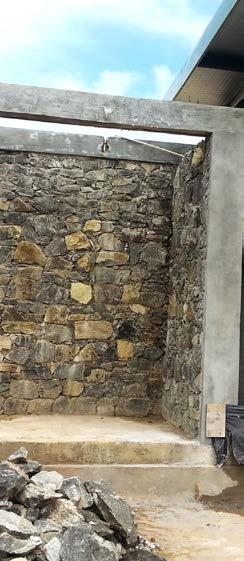


Directly adjoining the station is the forest, where Heterodermia queensberryi was discovered. In her book, Dr. Weerakoon notes of Heterodermia queensberryi: “This species has been spotted on branches of trees in shaded, humid interior regions. (It was) once observed on an open rock, growing among mosses. Found only in natural habitats above 1,000m. (They) mostly grow together with mosses and bryophytes.”
The estate’s management is now making great efforts to protect this species, and all species of fauna and flora in the forest, through a wellstructured and detailed programme. The forest area has been declared out of bounds and workers do not enter to even collect firewood. The programme includes minimizing the use of chemicals in nearby tea fields and using manual labour for weeding, despite the higher cost of such a practice. The effort is all the more laudable when one considers the acute shortage of labour throughout Sri Lanka’s tea industry.
The 415 hectare estate is a haven for wildlife, and leopards are a common site in the evenings and early hours of the day for workers in the tea fields, as are barking deer and smaller species of mammals, lizards and birds, according to M.F.S. Marzookdeen, the Manager of Queensberry Estate. A significant portion of the estate is forested and shelters biodiversity, as tea accounts for 256.76 hectares. The estate’s fuelwood plantation is expanded every year, providing more forest cover.
Sri Lanka is an ideal environment for the growth of lichens, with nearly 1,000 having been identified throughout the island already. Globally, about 20,000 species of lichens have been identified. Often described as a ‘combined life form’, some species of lichens have the longest lifespans among all organisms, with several being estimated to be over 3,000 years old.
Lichens are found in almost every terrain and climate, from rocks on the seashore to some of the highest elevations. They have the ability to grow on a vast range of surfaces from tree bark to soil and even concrete. They are often found to be among the first species to grow on any newly introduced surfaces and are found across a vast temperature range, from the arctic to deserts. Two lichen species that were exposed to the complete vacuum of outer space for 15 days by the European Space Agency, were found to have suffered no ill effects when they were brought back to Earth.
They are also among the most colourful of organisms, and vary widely in size and shape. Like plants, lichens use photosynthesis to produce their own food by combining sunlight, carbon dioxide, water and minerals. While most species of lichens propagate themselves through sexual reproduction, there are some species which have been found to practice asexual reproduction.
 Heterodermia sp.
Heterodermia sp.
The Climate Change Research Station itself has been designed to be completely carbon neutral, drawing its power supply from a 2.5 kilowatt micro hydro power station set up especially for this purpose. The power station is located further down the hill, tapping several water sources which flow from Queensberry Estate. Needless to say, given the pristine surroundings, scientists at the station will be working in a very pleasant environment. Its design provides an extraordinary view, and it is equipped with a variety of laboratories, and adequate and comfortable living amenities for researchers.
On the estate, the station is known as “East 17”, as it is located on Field number 17 of the East Division of the estate (not to be confused with the well-known English pop band of the same name). The estate has three divisions – East, West, and Lower.
A part of the station’s research will be targeted at the correlation between current agricultural practices on tea plantations and their carbon footprints. This would enable the identification of better manufacturing processes, and is likely to result in the identification of more opportunities for labelling of various teas as eco-friendly products, which in turn would enable the industry to obtain premium prices by better positioning when marketing such products.
It is now globally accepted that the increase in greenhouse gasses which trap heat has led to a rapid warming of the atmosphere, especially over the past 50 years. Research on a global scale into this critical issue, which threatens the very existence of our species, is of extreme importance.
The station is a major component in the University of Colombo’s project to gather information on life cycle carbon footprint in the tea and rubber industries, two of Sri Lanka’s key export industries.
Bunodephron sp.

Climatic changes have been especially acute in recent years at Queensberry, which makes it a challenge to maintain productivity and high quality. This makes the station a dire need, both for the estate, and the tea industry as a whole, noted Marzookdeen.
Originally a coffee plantation, Queensberry Estate is now well known in the tea industry for the high quality of its tea leaf. Its small, compact factory has the distinction of winning the most number of awards in 2013 and 2014 in the Forbes List for Western High Grown category teas. The factory was set up in 1924, was closed for a period from 1994-2002, and re-opened following the MJF Group’s acquisition of Kahawatte Plantations PLC.
In keeping with the environmental protection philosophy of Dilmah and Kahawatte Plantations PLC, Queensberry Estate has adopted best practices in all its day to day activities. These include comprehensive experiments with Bio-char, which is a soil additive produced from biomass, which is widely believed to help mitigate climate change through ‘carbon sequestration’ or negative carbon dioxide emissions. Biochar increases the fertility of soil, absorbs fertilizers and releases them over long periods, and increases agricultural productivity. Key advantages for the tea industry, and indeed many other forms of agriculture, include sharply lower costs due to the reduced amounts and frequency of fertilizer application, and significantly increased crop productivity. The estate has also focused on the production of compost in large quantities, to reduce on the usage of synthetic fertilizers.
The commitment of Dilmah to environmental protection is quite legendary among Sri Lanka’s corporate sector. In the discovery of Heterodermia queensberryi and Queensberry Estate’s Climate Change Research Station, it is clearly taking these efforts to a higher level.
Usnea sp.

In their ceaseless battle against the Tea Tortrix caterpillars which threaten the survival of tea plants, the planters of Lippakelle Estate are protecting an unlikely ally inhabiting a hostile terrain at an altitude of 6,000 feet, high up near Horton Plains - an insect-eating bat, Hipposideros galeritus
 WATAWALA PLANTATIONS PLC
Waltrim and Lippakelle estates, Nuwara eliya district
WATAWALA PLANTATIONS PLC
Waltrim and Lippakelle estates, Nuwara eliya district

In 2013, researchers carrying out a survey of biodiversity at Lippakelle Estate, discovered something peculiar in the Elgin Division.
“It was found that several tea blocks of the Elgin Division, almost at the summit of the mountain, were clearly free of damage from the Tea Tortrix caterpillars, which are serious pests in most tea estates. In fact, very few caterpillars were found up there at all,” said Udeni Wanigathunga - Senior Manager, Waltrim Estate of Watawala Plantations PLC.
The absence of Tortrix caterpillars (Homona coffearia) was all the more puzzling since these particular blocks of tea high up on a mountainside, were not being sprayed due to the difficulty of reaching this craggy area at 6,000 feet, with chemicals and sprayers.
“On closer inspection, a labyrinth of caves was found on the side of the mountain, most of them interconnected, and inside, hanging upside down, a species of insectivorous bat,” said Wanigathunga. The bats were found to be of the species Hipposideros galeritus
“These bats were flying out at nighttime, and feasting on the Tortrix caterpillars, which they are believed to locate on the tea plants in the dark using the radar that all bats are equipped with,” said Priyantha Sunilarathne, Manager of Lippakelle Estate.
The plantations’ managers quickly realized the uniqueness and effectiveness of their silent unseen ally, and reported back to the management of Watawala Plantations PLC. Instructions were issued to plantation workers to take all possible steps to protect this colony of bats. These included the ceasing of any spraying of chemicals in the area around the bat caves, and ensuring that the bats were not disturbed by the workers.
The insectivorous bats are not the only natural ally in the effort to control Tea Tortrix. Watawala Plantations relies heavily on natural control by the wasp species Macrocentrus homonae, a species that was in fact intentionally introduced to Sri Lanka in 1935 from Java. These wasps lay eggs on Tortrix caterpillars, and when they hatch, the young devour the caterpillars. As the Tortrix caterpillars thus form the food source for the wasps, the prevalence of both species are correlated. An increase in caterpillars has been found to lead to an immediate increase in wasps, and a reduction in caterpillars, which then leads to a reduction in wasps.
A success story in the natural control of pests – by courtesy of bats and wasps!



Situated above the towns of Lindula and Nanu Oya in the Nuwara Eliya District, Waltrim and Lippakelle Estates are reached via the Hatton-Nuwara Eliya A7 Highway, approximately 4 hours’ drive (120 kilometres) from Colombo. The Kotmale Oya-Agra Oya, an important water source for drinking water, irrigation and hydropower, flows by both estates, from which tributaries flow down to it. The picturesque Elgin Falls lies in close proximity to the estates.
Climbing around the rocky area bordering the forest swathed in mist, one can imagine the natural process that created the labyrinth of interconnected caves that are home to the bats and many other species. For millennia, water has flowed from Horton Plains down these mountains, ebbing and meandering in the different seasons, some streams being perennial, and others seasonal. Where the caves are located, the earth would have been washed away under a large number of mid-sized rocks, creating the caves. The water continues to flow and can be heard deep inside the caves. These are not the types of caves that one sees in adventure movies, but are quite hazardous to explore, with small openings and sheer drops into murky depths where no light penetrates. Some of the openings are large enough for a man to enter. Deep inside these caves, the bats have found their ideal home.


The Tea Tortrix caterpillar is a major menace for all tea plantations, and can cause severe damage to a block of tea within a few hours after hatching. It particularly prefers the luscious buds and tender leaves at the top of the branch, the very leaves and buds which are essential to brew a ‘cuppa’. They spread rapidly, with a single larvae making several nests by stitching together several leaves, containing thousands of eggs. This is one of the reasons for spraying insecticides on tea estates.
As far back as 1928, the Tea Tortrix was officially declared a pest by the Government of Ceylon, and strategies were formulated to control it. However, while these have had varying degrees of success, Tea Tortrix remains a major problem for the plantations.


Waltrim and Lippakelle Estates have been found to contain a large number of wild species. A three month long survey in 2013, by Rajika Gamage and Dananjaya KottawaArachchi, counted 168 species of fauna, including 33 endemic, 20 critically endangered or endangered, 13 that are classified as vulnerable and 14 in the near-threatened category in the Red list of Threatened Fauna and Flora. “The study revealed that each of the six habitats surveyed on the estate provided unique niches and supported the maintenance of natural diversity,” the survey noted.
Given the close proximity of Waltrim and Lippakelle Estates to the Horton Plains National Park, species from the Park often cross over to the estates. It is not at all unusual for workers to report leopards and sambur in the tea fields. The survey found 12 species of mammals, including three that were endangered (leopard, fishing cat, and the Sri Lanka purple-faced langur) and two that were near-threatened (sambur and barking deer).

Of the dragonfly and damselfly species recorded in the survey, two were found to be vulnerable, and four were near threatened. There were also four endemic species of butterfly, plus four that were endangered, four classified as vulnerable, and one that was near-threatened. The survey also found one endangered species of land snail, and two that were vulnerable, all three of which are endemic.
No less than eight species of amphibians that are endemic to Sri Lanka were found on the two estates, all of which were in the threatened category, including one that was critically endangered. Six reptile species that were endemic, and four that were endangered were also found.
These two estates also contain a significant number of birdlife with 68 species being counted. This included ten endemic species, one that is globally threatened, and 12 that were nationally threatened.
In stark contrast to the rocky mountainside, the tea factory of Waltrim Estate is a state-ofthe-art structure with the most modern operations. The original factory was destroyed by fire in 2010, and Watawala Plantations invested significant funds in building an entirely new factory.
The Waltrim factory is in fact a showpiece of Watawala Plantations, and receives large numbers of international visitors, including persons from the tea industry and other groups. The company took the opportunity of the new construction to bring in the most modern methodologies and technology. The building itself has been designed most intricately to cut down energy usage by optimizing sunlight, and reducing wastage and pollutants. The company’s sense of pride in the factory is clear from a sign that greets visitors proclaiming “You are entering a world’s best tea processing facility”.
Apart from the measures taken to protect the bat species, the estates have a comprehensive conservation programme in place. This includes the adoption of environmentally-friendly methods of agriculture such as the restriction of usage of chemicals, a crackdown on illegal hunting, the planting of trees to encourage the expansion of forest cover in identified sections of the estates, and the declaration of marshy areas along streams as restricted.
The unique natural control of Tea Tortrix at Lippakelle and Waltrim has led to efforts to protect the bats and wasps, principally by ensuring that they are undisturbed by human activity as far as possible, and efforts are being made to gather more information on their activities.

The rocky areas of the Elgin Division bordering the Horton Plains National Park were found to contain many other species apart from the insectivorous bat species, including Indian swiftlets which also use the caves as nesting grounds. Researchers documented many different types of calls of amphibians during nighttime in the area, and observed a large number of reptiles and amphibians. “This small patch of rocky area is ecologically valuable, an ideal place for a larger study of the ecology of these species of amphibians as well as reptiles,” the survey noted.
The estates were found to contain different ecosystems such as tea fields, home gardens, streams, eucalyptus patches, wetlands, and rocky areas. The rocky area received special mention with the researchers noting “the importance of this ecosystem is in providing refuge to a large number of amphibians, reptiles such as lizards, skinks, pit vipers and bats” for which this habitat appeared to be essential. The survey recommended restricted usage of agrochemicals, and use of manual labour operations in and around the rocky area to enhance this ecosystem, which have been adopted by the estate management. Interestingly, the 2013 study also noted that “there is a possibility that the number of species on Lippakelle Estate is much greater than what was recorded” and recommended larger surveys be carried out.


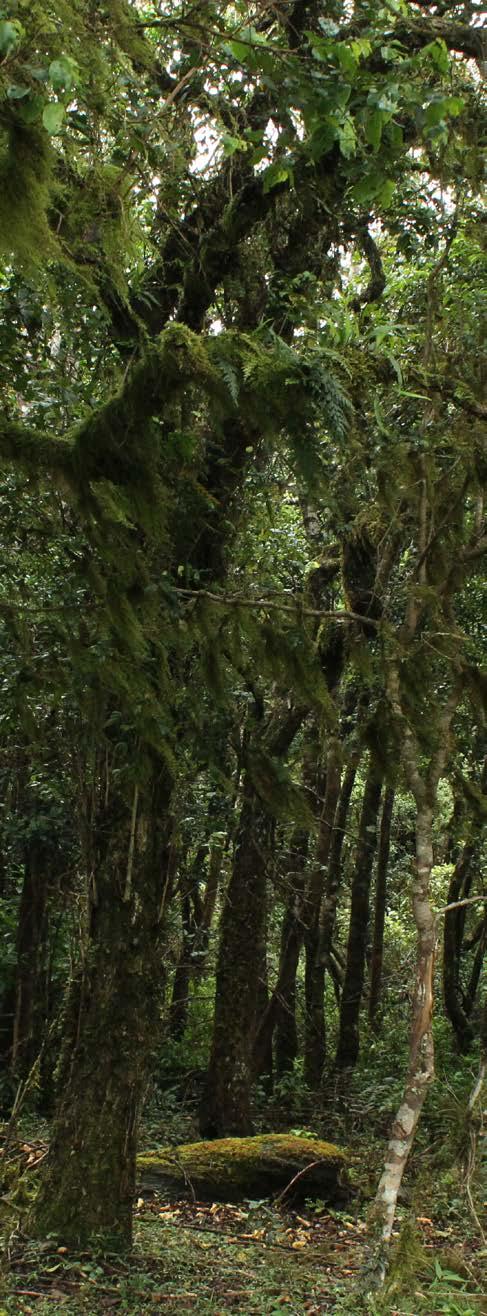



Quite apart from the measures taken to protect the bats in the Elgin Division, both Waltrim and Lippakelle Estates have implemented a comprehensive series of activities aimed at biodiversity conservation. The two estates which border each other, have an identical conservation programme that is closely coordinated, driven by both the Senior Manager at Waltrim who is responsible for both estates, and the Manager of Lippakelle. Scientific processes are welcomed in every aspect of the estates’ operations, with one side of Waltrim bordering the Tea Research Institute.
These include awareness creation among workers and the estate community as a whole, on the importance of the subject, and constant reminders through pictures on signboards of the large numbers of species with which they share the estate. Information centres have been created in each division, and the ‘Para Extension Committees’ of the estates have included conservation as an important aspect of their overall activities to improve productivity and enhance the estates’ working culture.
A well-thought-out programme of tree planting has increased forest cover, including the creation of mini-forest patches to harbor wildlife in divisions where such cover had earlier been sparse. These were found to provide a welcome refuge for many species, the most evident being birds including eagles. There is also a programme of planting mana grass in vacant patches of land. Utilizing some species of birds as important allies in the control of Tea Tortrix, the estates even have artificial nesting spots set up on trees and posts in the tea fields.
Water bodies on the two estates have received particular attention, including the planting of appropriate forest cover on the banks of ponds and lakes, and the protection of marshy areas.

Strict restrictions on the handling and usage of chemicals are also clearly evident, and is an important factor in enhancing the number of species on the two estates. Other methods that encourage conservation include rainwater harvesting, improving soil-water retention, and the utilization of tea and paddy waste by converting it to briquettes for energy.
All 16 estates of Watawala Plantations have obtained the important Rainforest Alliance certification for sustainable agriculture practices, and are regularly audited for compliance.
The experience in controlling Tea Tortrix with both the bat species and the wasp species has been an eye-opener in the effectiveness of natural control of this serious pest, and has been a lesson in the fine balance that nature maintains in various ecosystems. The assistance of the bats and wasps has supplemented the wide-ranging programme of the estate management to control Tea Tortrix by using human labour to manually remove the caterpillars.
The estate management is planning further studies throughout both estates to enhance documentation of the various species which inhabit the area, and to better gauge the success of its conservation programmes. The surveys will include a keen focus on the rocky areas of the Elgin Division, despite the difficulties of operating in this hostile terrain.
More research also needs to be carried out on the bats – not an easy task, given the inhospitable terrain and their nocturnal nature. But who knows? The area may contain more interesting species, in addition to the insectivorous bats of Lippakelle

 K.
K.
Sri Lanka is a moderate sized continental island listed as the 25th largest island in the world. It belongs among the equatorial belt of countries as it lies just South of the Tropic of Cancer. The country has a diverse topography as a result of upliftment and erosion. The net result of this process has been the creation of the central hills, with many peaks, and in cross section, a step-like arrangement referred to as Peneplains. The resulting landform thus has many escarpments, ridges and valleys. Apart from the central hills, there are “rock islands” called inselbergs jutting out from relatively flat terrain in the dry zone.
The drainage pattern of the country is almost entirely governed by the central highlands, with all the perennial watercourses originating in the mountains. The country is dissected by 103 river basins. The river flow contributes to the creation of some unique ecosystems in the flood plain areas.

Sri Lanka’s climate is largely governed by the monsoonal winds and affected by the central hills. The seasonality of rainfall, influenced by two distinct monsoons and convectional and cyclonic effects and the rain shadow effect caused by the central mountains, has given rise to two pronounced climatic regions, the wet and dry zones. Due to the high altitudinal variation, the mean temperature of the Wet Zone drops progressively from 27˚ C in the lowlands to around 13˚ C - 16˚ C in the montane areas. The temperature plays an important role in the highland regions where the decreasing temperature at higher elevations along with the wind has resulted in unique natural communities. The Dry Zone, with a mean daily temperature of 30˚ C, is spread over much of the lowlands plains. A narrow Intermediate Zone lies between the Wet and Dry Zones, and there are two extra dry coastal strips with prolonged drought periods in the north-west and south-east coastal regions forming the Arid Zone.
Sri Lanka, being a continental island, is endowed with a coastline of 1680 km. Therefore, nearly 24% of the land area of Sri Lanka comes under the coastal zone. The shelf around northern and north-western parts of the island is broad, whereas the shelf ends more abruptly in the south and east of the island.
Based on geological evidence, Sri Lanka has been in existence for nearly 3 billion years. From the Preterozoic (2500-500mya) era up to the Jurassic period, Sri Lanka remained part of the Gondwana super subcontinent. During the Jurassic period, approximately 158-160 mya, the Indo-Madagascar plate drifted away from East Africa, followed by the separation of the Indian plate from Madagascar around 84-96 mya (Briggs 2003). After the separation from Madagascar, the Indian plate underwent a period of isolation for about 30-40 million years (my), before colliding with the Eurasian plate around 40-50 mya. With the collision of the Indian and Eurasian plates there was exchange of biota between Asia and peninsular India. Consequently, the “Biotic ferry model” was proposed, according to which the rafting Indian plate carried ancient Gondwanan forms to Asia. Upon collision with Asia these Gondwanan forms dispersed out of India and into Asia (also called the “Out-of-India” hypothesis). Likewise Palaearctic mammals such as the Elephants (Elephas, Hyselephas and Palaeoloxodon), Hippos (Hexaprotodon), Rhinos (Rhinoceros), Lions and Tigers (Panthera) dispersed into India (“Into India” hypothesis).
Lowering of the sea level, during the Pleistocene era (1.8 million to 11,700 years before present) made it possible for faunal groups to cross over from the Indian subcontinent to Sri Lanka across the Palk Strait through the Adam’s Bridge. This hypothesis is supported by the discovery of fossils belonging to Tiger (Panthera tigris) from Batadomba and Alawala caves, and Rhinoceros from Lunugala. Sea level changes also facilitated the movement of small vertebrates such as the ancestors of horned lizards (Cerataphora

species). Long periods of isolation between interglacial periods, where the sea levels rose cutting off the land connection, appear to have led to the process of speciation allowing the evolution of many new species. A case in point is the evolution of five species of the genus Ceratophora at different altitudinal ranges in Sri Lanka. Prehistoric humans also appeared to have immigrated to the island during this period as evidenced by the stone tools found in the Bundala Pathirajawela (dated to 125,000 years before present).
Therefore, geological history of Sri Lanka can be subdivided into four phases, (i) Pre-drift phase where Sri Lanka and India were part of a much larger landmass referred to as the Gondwanaland (> 160 MYBP), (ii) Drift phase ending with the collision of the Indian plate and the Asiatic continent (50 and 40 MYBP), (iii) Miocene epoch (25 MYBP) where Sri Lanka separated from the Indian subcontinent, following a series of complex tectonic movements, which began in the Jurassic era (iv) Quaternary epoch (two MYBP to present), where sea level changes driven by climate cycles resulted in repeated formation of land bridges between India and Sri Lanka, in the Palk Strait region.
These zoogeographic, climatic, topographic and edaphic factors have resulted in a diverse array of aquatic and terrestrial habitats as well as a multitude of coastal and marine habitats. In addition, 2500 yearlong hydraulic civilization has created some unique manmade habitats such as manmade tanks and agricultural landscapes all of which have contributed to the establishment of a rich faunal and floral assemblage with some very unique attributes.
Sri Lanka supports an unusually high biodiversity compared to any other moderate sized tropical island. The hallmark of Sri Lanka’s biodiversity is signified by the presence of large populations of mega fauna (Asian elephant, leopard, sloth bear etc.,) that do not occur in other moderate sized islands, as well as the presence of a large proportion of endemic species (species that are naturally found only in Sri Lanka). Therefore Sri Lanka, along with the Western Ghats of India, is listed as one of the 34 biodiversity hotspots of the world. Designation of a biodiversity hotspot is based on two criteria, presence of 0.5% or 1500 species of vascular plants as endemics and reduction of forest cover by 70% or more causing many of the taxa to become threatened with extinction. Designation of Sri Lanka as a biodiversity hotspot is based on both of these criteria as there is a high level of endemicity in most taxonomic groups and a high proportion of the species in most taxonomic groups are threatened with extinction, especially in the case of endemic species, primarily due to loss of habitat.
This high level of endemicity may have arisen due to multiple reasons such as the topography, climate, abundance of water, association with multiple land masses during its evolutionary history and being a continental island as opposed to a volcanic island. These factors would have contributed to repeated cycles of colonization followed by long periods of isolation leading to speciation resulting in the evolution of many endemic species. In other words almost all the evolutionary drivers appear to have operated on Sri Lanka, during its evolutionary history, shaping up its biodiversity.
According to the available historical records and fossil evidence, much of the island has been covered with forests in the past. This may be the reason why most of the fauna encountered in Sri Lanka are forest dwelling species. However, the forests in Sri Lanka have been subjected to major remodelling by natural forces in the past such as climate change, and in more reason times, by activities of man.

At present more than two thirds of the forest habitats in Sri Lanka are found in the dry zone. However, the tree density, diversity and endemicity in the dry zone forests are comparatively lower than the wet zone forests. The low density in trees makes these forests much more spacious and therefore supports larger populations of charismatic species such as Elephas maximus (Asian elephant), Melursus ursinus (Sloth bear), Panthera pardus (Leopard), Rusa unicolor (Sambur) and Axis axis (Spotted deer). The low endemicity of animals seen in these forests could be attributed to the fact that most of these forests have been cleared by man during the last several thousand years to make way for agriculture during the height of the hydraulic civilization that existed in the dry zone of Sri Lanka, which may have resulted in the removal of many of the sensitive endemic fauna. The only endemics that are unique to the dry zone are found today in forests associated with inselbergs and riverine forests that would have been left undisturbed during this era. For instance, endemic species such as Phaenicophaeus pyrrhocephalus (Sri Lanka
Red faced malkoha) and Semnopithecus vetulus (Purple faced langur) are found predominantly in the riverine habitats in the dry zone and endemic species such as Cnemaspis alwisi (Alwis’s day gecko found only in Dolukanda). Cnemaspis kumarasinghei (Kumarasinghe’s day gecko found only in Maragala), Cnemaspis podihuna (Dwarf day gecko found only in Lahugala) and Nannophrys naeyakai (Sri Lanka tribal rock-frog found only in Kokagala and Yakunne hela) are all endemic species recorded only in inselbergs.
The wet zone forests that represent only about 3% of Sri Lanka’s land area on the other hand, have very high plant diversity where the structure of the forest shows a high degree of microhabitat complexity. Further, many of the remaining forests have remained relatively
Ceratophora aspera

undisturbed by man for a very long time. More than 75% of the endemic species in Sri Lanka are restricted to the wet zone where only about 10% of the original forest cover remains. Forests in the wet zone also show a marked altitudinal variation, based on which these forests are grouped into lowland, submontane and montane rain forests. These three categories have distinct differences in the structure and composition of their vegetation. While many faunal species show a wide distribution among all three types, some faunal species are restricted in their distribution to one of these forest types. The
lowland rain forests have the highest land extent, and support a greater faunal diversity. Many species of endemic freshwater fish are restricted to the streams located within lowland rain forests as they provide ideal habitat conditions for tropical fish. In addition many species of invertebrates and vertebrates are also restricted to the lowland rain forests. The montane rain forests have the lowest land extent comprising only 0.05% of the total land extent of Sri Lanka. However, there are a number of endemic species restricted to these montane forests such as, Pycnonotus penicillatus (Sri Lanka Yellow-eared Bulbul), Myophonus blighi (Sri Lanka Whistling Thrush), Bradypterus palliseri (Sri Lanka Bush Warbler), Suncus montanus (Sri Lanka Highland Shrew) and Rattus montanus (Sri Lanka Nellu rat).
Sambur Rusa unicolorMyophonus blighi
Even though Sri Lanka is endowed with a diverse and unique assemblage of fauna and flora many of these species are running the risk of extinction due to a number of threats they face. Loss of habitat is the most significant threat contributing to the loss of biodiversity in Sri Lanka. During the last century alone, Sri Lanka’s natural forest cover has declined by about 50% and continues to decline even at present. The resulting loss and fragmentation of habitat have been the major driver that has resulted in many of the species becoming extinct or driven toward the brink of extinction.

Overexploitation, introduction of invasive alien species and human-wildlife conflict are three of the other major drivers that contribute to loss of biodiversity in Sri Lanka. Invasion by non native species is considered today as one of the greatest threats to the world’s biodiversity. Sri Lanka is an island with a high proportion of endemic plants and animals due to its long geographic isolation that limits immigration of new species, allowing established species to evolve in the absence of strong competitors and predators. Many of these endemic species are highly specialized to the habitats they have evolved in and their continued existence depends on availability of habitat as well as quality of the habitat. Therefore, invasive alien species, introduced due to human activities, have a dramatic effect on such isolated ecosystems where it can become a leading cause of species extinctions. Further, islands are more vulnerable to invasion by alien species as they lack natural competitors and predators and due to their isolated nature, islands have to interact more with the outside world and the present trends in globalization have led to increased trade, tourism and transportation that are responsible for the most number of accidental introductions of potentially invasive species. Rapid expansion of human use areas resulting in large scale changes in land use patterns has contributed to conflict situations between humans and wild animal populations that has resulted in further deterioration of the conservation status of many of these conflict creating species, who are already threatened with extinction.
As a tropical island, Sri Lanka is extremely vulnerable to the predicted climate change related impacts such as sea level rise, salt water intrusion leading to increased salinization of low lying areas, rising ocean and ambient temperatures, changes in rainfall patterns and increased frequency of storms and other natural hazards such as floods and landslides. These changes will have a significant effect on Sri Lanka’s biodiversity especially the distribution of species, composition of ecological communities and biological processes such as flowering, fruiting, reproduction and migration.
Loss of biodiversity will lead to loss of goods and services provided by the biological resources as well as loss of resilience of natural ecosystems to withstand changes in the environment, especially the predicted changes that are brought about by climate change. This in turn will have a significant impact on human well being and livelihoods such as agriculture and fisheries that directly depend on these ecosystem services. Further, Sri Lanka plans to expand its tourism industry which heavily depends on the natural capital whose loss will reduce the attractiveness of Sri Lanka as a tourism destination. Loss of biodiversity will also have an impact on future benefits that can be accrued from biological resources such as development of new drugs and improving crop varieties using emerging innovations of biotechnology.
 Eumyias sordida
Eumyias sordida


 Dr. Herath Manthrithilake Head - Sri Lanka Development Initiative, International Water Management Institute (IWMI)
Dr. Herath Manthrithilake Head - Sri Lanka Development Initiative, International Water Management Institute (IWMI)
Sri Lanka is the world’s fourth-largest tea producer and is competing for the highest exporter slot with Kenya and China. The highest production of 340 million kg was recorded in 2013 (CB Annual Report, 2014). Tea is one of the main sources of foreign exchange to Sri Lanka. It accounts for 2% of GDP, contributing US $1,527 million (in 2013) to the economy (EDB Report, 2014). Nearly 1.5 million people or some 5 % of Sri Lanka’s 21 million population, work in the tea sector.
Important as it is for the economy of the country, the sector is faced with numerous challenges. A national poverty study conducted in 2012-13 noted that 10.9 percent of families working in the tea sector lived below the national poverty line of SLR 3,028 per month. The tea industry is faced with rampant ‘labor shortages’; increasing costs of production and market calamities are an everyday occurrence in the industry. Climate change also poses an added and greater challenge. Concerns over loss of biodiversity and disrupted ecosystems have increasingly come to the fore. Therefore, urgent steps are needed in order to ensure the sustainability of the tea industry and to safeguard the thousands of families that depend upon it.


Times have changed. Old fashioned planting and value addition is no longer acceptable in this millennia. The time to shift gears is now. We can produce better quality tea within a smaller area, replace coffee shops around the world with ‘Ceylon tea’ shops - all while protecting the richness of our biodiversity. What is needed is the integration of innovative thinking into all aspects - from the method of planting a sapling to the end product in the hands of the consumer.

The humidity, cool temperatures and rainfall of the country’s highlands provide a climate that favors the production of high-quality tea. It is said that Sri Lanka has the potential to produce up to 3000 kg or more of tea leaves per ha/annum (personal communications with experts). Currently, smallholders produce around 2500 - 3000 kg of tea leaves per ha per year. The average tea leaf production is larger in upcountry estates amounting to 1200 kg/ha/yr. These numbers indicate the existing potential within plantations. Importantly, this tea production potential has to be harnessed within existing constraints, not from further expansion in new plantation acreage or with more labour. Many associated environmental problems can arise due to the expansion of tea production into virgin areas. With the clearing of new areas, fauna and flora native to the area may be lost and disease, pest problems and the spread of invasive alien species may come about due to changes to the ecosystem. Soil erosion is another significant consequence of expansion into new areas. Additionally, with the increase of new opportunities, it becomes more difficult to retain the younger generation for labor in tea estates.





The expansion of tea cultivation areas around the central highlands have reduced over the years and the total land area covered with tea plantations have in fact, decreased. Areas of tea cultivation in the mid country too have diminished rapidly over the years, whilst in the low-country, tea from small holdings is taking over the industry. Furthermore, productivity in the sector is falling and water shortages are a frequent occurrence as a result of climate change. Thus, there is a growing need to examine the role of tea in the landscape and the sustainability of the value chain of tea.

Many unproductive and abandoned tea plantations lie on hillsides of the mid-country where further land degradation due to soil erosion is a key concern. Productivity of such areas are low due to soil degradation and a lack of effective soil-water management. However, there are methods to raise productivity of poorly performing tea lands. Unless the required Carbon:Nitrogen (C:N) ratio is re-established and moisture retention capacity of the soils rebuilt, it is not possible to gain higher yields. The use of chemical fertilizers may cause temporary yield spikes - however, these yield increases are not always sustainable. In order to make the most of chemical fertilizer application, the humus layer on soils must be rebuilt. Without this layer, nutrients from chemical fertilizer would be washed away. On the other hand, obviously, all these will certainly require significant investments.
Large plantations were designed and operated for a single purpose (mono crop, and in isolation from the landscape of the entire catchment. However, there was no consideration for the broader ecosystem service values in the design. As a result, such plantations have large societal and environmental costs. These include the reduction or loss of biodiversity, soil erosion, diminishing freshwater and/or other aquatic resources, reduced quality of water for drinking purposes and recreational uses downstream. Reduced river flows could affect aquatic ecosystems and wetlands. These impacts are visible in mid-country tea estates, which have mostly gone out of production. It is disheartening to see that now more and more plantations are sliding down the same path. Of course, some plantations are making attempts to reverse some of the adverse effects of monoculture through the ‘Rainforest Alliance Certification’ process. This process establishes a set of criteria designed to conserve wildlife; safeguard soils and waterways; protect workers, their families and local communities as well as support livelihoods. Despite the reasons for engaging in Rainforest Alliance Certification, the effort being made to sustain ecosystems through this process is somewhat admirable.
The above challenges require quick action. One response is to increase tea production in existing plantations, thereby exerting less pressure on the environment whilst focusing on sustainability (without undermining our capacity to continue producing tea in the future). Investments in conservation measures (for sustainability) do not yield shortterm, but the benefits in the long-run are certainly significant. However, there is a general concern that investment decisions are driven primarily by a desire to maximize shortterm profits rather than to ensure long term sustainability.

Historically, the drive for increased productivity and yields has led to monoculture resulting in degraded environments - reduced biodiversity and associated reductions in ecosystem services. These factors affect productivity and yields in the long-run. Tea plantations in the mid-country are ample proof of this. However, agricultural systems have created a diverse range of agro-ecosystems that provide a range of valuable provisioning, regulating, supporting and diverse habitat services that are often unrecognized and undervalued. Furthermore, there also exists a range of subsidiary services of substantial value that communities and societies at large depend on (See Figure 1.).
Source: http://www.unep.org/maweb/documents/document.300.aspx.pdf

It is important to appropriately recognize all these services as there is a growing need for more active management of agricultural systems to maximize the value of such services. The challenge lies in re-balancing ecosystem services. It is merely harnessing the inherent but hitherto neglected services of the ecosystems. One may not maximize crop production, however this shall be balanced or rather enhanced with returns from other aspects. (See Fig. 2.)
crop production forest production preserving habitats and biodiversity water flow regulation water quality regulation carbon sequestration regional climate and air quality regulation infectious disease mediation
Natural ecosystem Intensive cropland Cropland with restored ecosystem services
Figure 2. Balancing different eco system services
Source: http://www.slideshare.net/SIANIAgri/katarina-hedlund (accessed on April 05, 2016)
Ecosystem-inclusive approaches aim to unlock currently unrecognized and therefore untapped opportunities and values associated with plantation agroecosystems.

Unlocking these values will increase the resilience of agricultural production systems and enable sustainable intensification of agriculture. Potential trade-offs of ecosystem services in agro-ecosystems are clearly shown in figure 3 (Pittock 2015). Sustainability would be assured by moving from State A to State C. Or else, arriving at State B is certain. It may be a matter of time. This means, one has to lose a certain amount of provisioning (see fig.1), in order to gain from other enhanced services.
Restoration
State C State A State B high
Ecosystem Services Level
low
natural light use extensive intensive degraded Ecosystem State high low Biodiversity



Figure 3. Ecosystem trade-offs
Source: http://www.ecosystemvaluation.org/1-02_def3.htm (accessed on June 21, 2015)
Having these concepts in mind, Water, Land and Ecosystem (WLE) Program, - a research program led by the International Water Management Institute (IWMI) has developed a framework for an ecosystem- inclusive approach (See Figure. 4). It considers agricultural systems as part of the broader ecosystem and incorporates connections between them. It connects people with such ecosystems through services. The framework describes how natural (influencing) factors and the anthropogenic (governance) decisions influence such eco-services.


Yet the different but increasing demands from rising population has to be met. This requires that new approaches in management, development, modernization, operation and maintenance be adopted to achieve higher levels of performance and to sustainably to reduce the negative impacts on ecosystems. The overall long-term objective is “a betterperforming and sustainable systems that efficiently and equitably provides a range of ‘goods’ and services.” This approach requires sustainable intensification (SI) of crop production from limited resources. This “sustainable intensification” approach is a policy goal for a number of national and international institutions. However, it also attracts criticism for being too narrowly focused on production or representing a contradiction in terms.
Successful SI will require: a) establishing how land-sharing can deliver sufficiently high yields and multiple ecosystem services, b) quantifying trade-offs between yields and different environmental benefits and assessing how best to resolve them across different circumstances and spatial scales, and c) exploring policy and market mechanisms that enhance the implementation of sharing or sparing initiatives. Innovation and investment are key for achieving successful SI and t here are opportunities for implementing these measures in the tea sector.
The Ecosystem-oriented Approach and Sustainable Intensification of agricultural production is a new and evolving concept - its meaning and objectives are subject to debate and contest. However, sustainable intensification of tea production is only part of what is required to improve the sustainability of plantations and is by no means synonymous with tea sector security. Both sustainability of plantations and tea sector security have multiple social, economic, ethical, and environmental dimensions. Achieving a sustainable, ecohealth enhancing production systems will require more than just changes in a few agricultural practices. It will also require radical investment agendas to reduce intensive resource degradation in plantations and to improve governance, management, efficiency, and resilience.
1. Sri Lanka Export Development Board, 2014, Industry Capability Report: Tea Sector,http://www.srilankabusiness.com/pdf/industrycapabilityreport_tea_ sector.pdf (accessed on April 05, 2016)
2. CB Annual Report 2014 Central Bank of Sri Lanka, (http://www.cbsl.gov.lk/pics_n_ docs/10_pub/_docs/efr/annual_report/AR2014/English/content.htm) (accessed on April 05, 2016)
3. http://www.ecosystemvaluation.org/1-02_def3.htm (accessed on June 21, 2015)
4. https://wle.cgiar.org/ (accessed in October 2015).
5. http://www.slideshare.net/SIANIAgri/katarina-hedlund (accessed on April 05, 2016)
6. http://www.unep.org/maweb/documents/document.300.aspx.pdf (accessed on June 21,2015)
Kahawatte Plantations PLC is creating a forest corridor on Endana Estate, to link isolated patches of jungle with the Sinharaja Forest Reserve, enhancing the many species of unique fauna and flora in the area and helping to preserve and enrich biodiversity.

There’s good news for the many species which inhabit Walang Kanda, a small mountain surrounded by human habitation and tea plantations, bordering Endana Estate in the Ratnapura District. Efforts have commenced to connect this isolated forest patch with the globally famed Sinharaja Forest Reserve, through a corridor that is specially designed and set up by Endana Estate to ensure the survivability of all species which live on Walang Kanda.
The project is creating a 1.5 kilometer long biodiversity corridor which is designed to link the isolated Walang Kanda with the Pita Kanda area in the Delwala Forest on the outskirts of the Sinharaja Forest Reserve. The width of the corridor, varies from a minimum of 30 metres to several hundred meters, which will, in time be densely forested, with the programme already underway. The corridor crosses the Delwala River, and is located on the catchment area of this small river.
The Endana Estate is owned by Kahawatte Plantations PLC, a member of the Dilmah Group of companies. The Endana Biodiversity Corridor is a key component of the Dilmah Bioregional Initiative, a project of Dilmah Conservation – the Conservation arm of Dilmah Tea with the support of several eminent sector specialists in the field.
Sinharaja is famed among conservationists as a marvel of genetic diversity. However, the many species of fauna and flora on Walang Kanda, just 1.5 km away, has become isolated due to the area surrounding this small mountain being taken up almost entirely for tea planting, and by the homes and home gardens of local villagers.

Endana Estate is located on the border of the Sinharaja Forest Reserve. Containing mainly tea, Endana Estate is approximately 4 hours’ drive from Colombo and is reached via the A4 highway, turning on to the A15 highway at Pelmadulla, a total distance of 140 km. The estate has a clear view of Adam’s Peak which is located to the north. To the south and west lie the dense jungles of Sinharaja, its mountains often shrouded in mist, a haven for hundreds of species of fauna and flora.
Given its close proximity to the Sinharaja Forest Reserve, Endana Estate is endowed with a large number of species in terms of both fauna and flora. Leopards are often encountered by the estate’s workers, and the abundant birdlife is clearly visible to visitors. Extensive field surveys were carried out on Endana Estate, prior to the decision to set up the biodiversity corridor.
Extensive field surveys were carried out on Endana Estate, prior to the decision to set up the biodiversity corridor. Baseline surveys were undertaken at either end of the corridor (on Walankanda and Pitakanda) and throughout the proposed corridor. Periodic surveys have been planned for the future, to scientifically assess the success of the project in promoting biodiversity, and the movement of species across the corridor between Walankanda and Pitakanda.
The surveys found that Endana Estate is home to 180 species of flora, including 37 which are endemic. A survey on Pitakanda found 177 species, of which 49 are endemic (5 of these are listed as endangered, 26 as vulnerable and 21 as near threatened in the IUCN Red List 2012).
A similar richness was found in fauna during the surveys. On Pitakanda a total of 154 species were counted, of which 44 are endemic, 3 nationally critically endangered, 10 endangered, 16 nationally vulnerable and 16 nationally near threatened. They included seven species listed as globally threatened (5 endangered, 2 vulnerable and 4 near threatened). On Endana, a total of 151 faunal species were found, including 32 endemic, and 5 threatened.
However, the area has a significant human population, a mix of estate labour and their families, and villagers located around much of the estate.
The project, which commenced in 2013, is expected to take five years, and includes the planting of a large number of native species of trees within the corridor. This is particularly important, given that while some parts of the corridor have a significant number of trees, much of it was in tea plantation and requires complete reforestation. A plant nursery has been set up for this purpose, and 1,700 plants are already planted. These consist solely of local forest species, and include hora, kitul, kelaa del, beraliya, malabada, velan, ruk, bamadomba, hadawatha, mee, karanda, pelen, hora, naa imbul and kumbuk.

Importantly, Kahawatte Plantations PLC has appointed a project manager on site to co-ordinate the project, whose time is dedicated to the development of the biodiversity corridor, and who is supported by the management and staff of Endana Estate.
Ruk - Horsfieldia iryaghedhi
Kele del - Artocarpus nobilis
From its beginnings, this project was envisaged as a long-term one, reflecting both Kahawatte Plantations’ and Dilmah Conservation’s commitment to sustainability and environmental protection. Dilmah Conservation has also planned a much larger biodiversity corridor in the Nawalapitiya area of the Nuwara Eliya District at a higher elevation, which will link large forest patches on several divisions of the Queensberry estate. This would involve the divisions of Kataboola, Westhall, Barcaple and Queensberry – all owned by Kahawatte Plantations PLC. The Endana Biodiversity Corridor has therefore much significance, as its success or failure would provide important lessons for best practices in setting up larger corridors.
The linking of forest patches through the setting up of biodiversity corridors is now a global trend in conservation, and is especially significant in ensuring that species in areas which have become isolated, do not fall prey to genetic isolation, which would weaken many species within them. For a country of its relatively small size, Sri Lanka is indeed rich in biodiversity, both in fauna and flora. It is all the more important then that there should be integrated programmes to promote biodiversity conservation throughout the island.
IUCN’s Asia Biodiversity Conservation Programme notes: “The country’s wet zone rainforests in the south contain the highest levels of endemism for both flora and fauna and the vegetation of Sri Lanka supports over 3,350 species of flowering plants and 314 species of ferns and fern allies. The vertebrate fauna include 51 species of teleost fishes, 39 species of amphibians, over 125 species of reptilia, over 390 species of birds, 96 species of mammals including 38 species of marine mammals. The country’s invertebrate fauna is equally diverse.”
Much of Sri Lanka’s forest cover has become increasingly isolated, due to agricultural practices which have been followed during the last century and a half, both in domestic agriculture and in plantation agriculture producing export crops such as tea. While Sri Lanka has a large number of national parks and forest reservesof varying sizes which are dedicated to conservation, smaller forest patches scattered throughout the country which do not enjoy such statutory protection have increasingly become isolated due to the growth of agricultural areas.
A series of hydroelectric / irrigation projects on the country’s larger river basins which have been constructed from the 1950’s up to the present day, has resulted in large swathesof previously uncultivable land areas throughout the country receiving irrigation through a new system of canals and increased water

supply to existing canal systems. This in turn has led to the settlement of hundreds of thousands of people for the purpose of farming in areas that had previously not been sufficiently fertile. In fact, human resettlement has been a pivotal feature of almost all of the hydroelectric dams and irrigation projects in the country. The combination of expanded human settlement and land under agriculture has resulted in increasing isolation of small forest patches.
These isolated forests are continuously under threat from all types of human activities, which include grazing for farm livestock, land encroachment, forest clearing for agriculture (both seasonal and perennial), logging for wood and firewood, forest fires, and poaching.
Above all these aspects lies the fact of increasing population. Sri Lanka’s population has expanded rapidly during the past 70 years, and the island now has a population of 20.36 million and a population density of 352 persons per square kilometer (2012 census), which has placed immense strain on land resources.
The need for an integrated approach to biodiversity conservation has become increasingly apparent. Since the isolation of forest patches leads to weakening of gene pools within such areas due to inbreeding, the setting up of forest corridors to link gene pools is generally now believed to be a crucial strategy to ensure the survivability of existing species, and the strengthening of species in genetic terms by preventing inbreeding.
Forest corridors can be set up using several methods, such as buffer zones, linear corridors, stepping stone corridors and landscape corridors. The Endana Biodiversity Corridor is a linear corridor, directly linking the isolated Walang Kanda with Delwala Forest, which is connected to the Sinharaja Forest Reserve.

From the inception of this project, stakeholder engagement was a vital requirement, since a significant number of people live in close proximity to the Endana Biodiversity Corridor. It was therefore considered of high importance that the assistance and commitment of these stakeholders must be enlisted for the protection of the corridor. A key challenge was in convincing the local community of the importance of setting up this biodiversity corridor, and a series of educational initiatives were carried out by Kahawatte
Plantations PLC to create awareness on the topic.
Kahawatte Plantations PLC has itself set aside a land area within Endana Estate, as a part of the Endana Biodiversity Corridor. However, another important challenge that needed to be overcome was the willingness of five privately owned land-owners which lay within the proposed Endana Biodiversity Corridor to be a part of the initiative. This aspect required much negotiation, as matters dealing with land in Sri Lanka are invariably complicated and require delicate handling.
The involvement of Dilmah Conservation has already served to give the Endana Biodiversity Corridor a high profile, both in Sri Lanka and among conservation circles overseas, as it is considered to be an important pilot project. It is likely that in years to come, when many more such corridors are set up, conservationists will look back on Endana as a pioneering venture which cleared the path for the success of this concept in Sri Lanka.

Talawakelle Tea Estates PLC has demonstrated the company’s total commitment to environmental conservation through integrated long-term programmes that control and effectively manage all day to day and strategic activities throughout its 16 estates. Its wellplanned strategic environmental imperatives covers interventions that focus on Water Conservation and Purification, Forest and Biodiversity Conservation, Safe Use of Agrochemicals, Climate Change, Energy Conservation, Carbon Footprint, Solid Waste Management and Promoting Education and Awareness.
 TALAWAKELLE TEA ESTATES PLC
TALAWAKELLE TEA ESTATES PLC
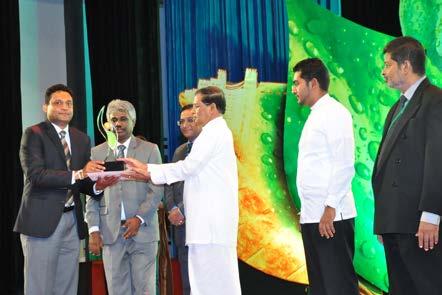
At the National Green Awards 2015 presented by the Central Environmental Authority, two tea estates managed by Talawakelle Tea Estates PLC (TTE PLC) - Kiruwanaganga and Mattakelle, won coveted titles, the former winning the Gold and the latter the Silver in the Food & Beverage category. It was a creditable achievement for the company to have been selected as the winner and runner-up in a single category. Talawakelle also won the Gold for “Excellence in Environmental Sustainability” at the National Business Excellence Awards-2014, which clearly affirms the best conservation practices adopted on estates.
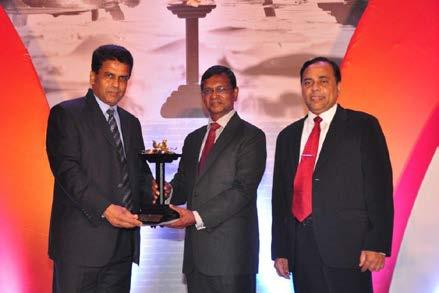


“By impressing upon all our managers that their conservation work must be up to global standards, we have ensured that the spirit of conservation has become deeply ingrained in all the day to day activities on our estates. You cannot achieve tangible results and continue to win recognition for our efforts unless there is total commitment towards the environment throughout the company,” says Theja Dharmaratne, General Manager Sustainability & Quality Management Development at Talawakelle Estates PLC.
The list of awards that TTE PLC has won are many - but its managers prefer to focus on the future initiatives that they plan to commence, to enhance their conservation efforts.
Senior
General
Being a Plantation Management company and a custodian of 6,490 hectares of nations high value and environmentally sensitive land resource, TTE PLC has focused on environmental conservation from its early stages and ensured that its efforts quickly reached global standards. Its 16 estates some of them bordering forest reserves, have been documented by researchers as being extremely rich in biodiversity. By 2010, with the implementation of the Rainforest Alliance Sustainable Agriculture Network Program, the company had begun a full environmental conservation programme in six estates in the Talawakelle region of the Nuwara Eliya District. In the following year, this programme was extended to six more estates in Talawakelle and several in the company’s low-country estates in Deniyaya in the Matara District.
All TTE PLC estates are located in the Hill Country Wet-Zone (HCWZ) and Low Count Wet-Zone (LCWZ) which are the regions with the highest forest cover and biodiversity that regulates climate and rainfall in the Wet-Zone. Origins of important watersheds, catchment areas feeding national rivers- Nilwala, Gin, Kotmale Oya and Nanuoya are within TTE PLC estates.
The programme was first incorporated into the practices of the upcountry estates –Bearwell, Great Western, Holyrood, Logie, Mattakelle, Palmerston, Wattegodde, Calsay, Clarendon, Dessford, Radella and Somerset - situated in the picturesque TalawakelleLindula-Nanu Oya region of the Nuwara Eliya District, approximately four and a half hours drive from Colombo via the High Level road, Avissawella and the Hatton-Nuwara Eliya road.
The low country estates – Kiruwanaganga, Deniyaya and Handford - are in the Deniyaya region located in close proximity to the Sinharaja, a UNESCO world heritage site and Diyadawa Forest Reserve, which is 3 hours’ drive from Colombo via the Southern Expressway, exiting at Imaduwa Interchange and proceeding on the A17 highway.
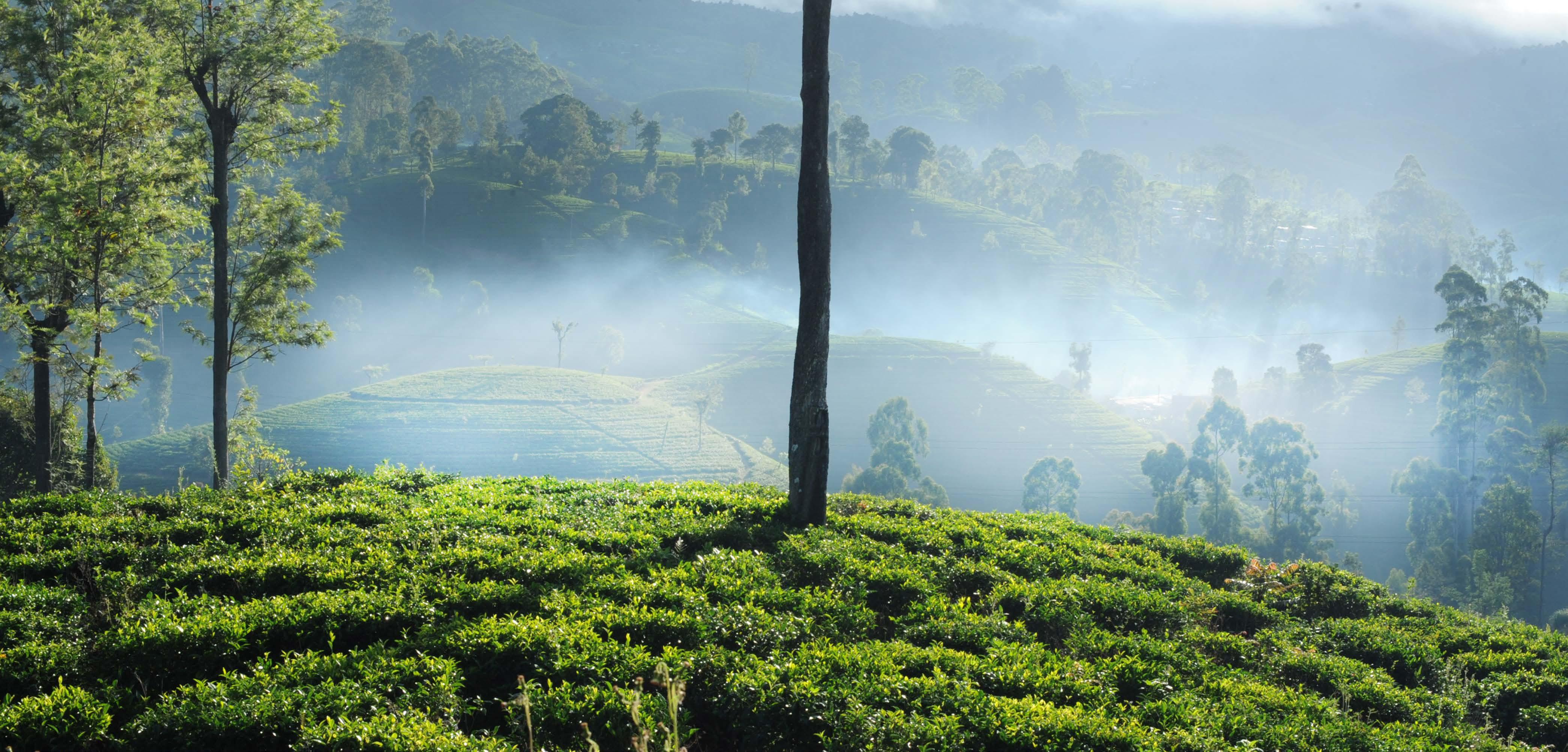
Company has a comprehensive environmental policy, which addresses all vital aspects of environmental management and all employees have been educated on its contents and intent for effective implementation and compliance.
The company has undertaken a SWOT (Strengths, Weaknesses, Opportunities & Threats) Analysis of the environment along with a risk assessment and also developed strategic environmental imperatives, which are impacting the environment within estates.
The strategic imperatives, through which Talawakelle Tea Estates manages its environmental programme includes water conservation and purification; forest and biodiversity conservation; safe use of agrochemicals; reducing energy usage, GHG emissions and carbon footprint; solid waste recycling and awareness creation.
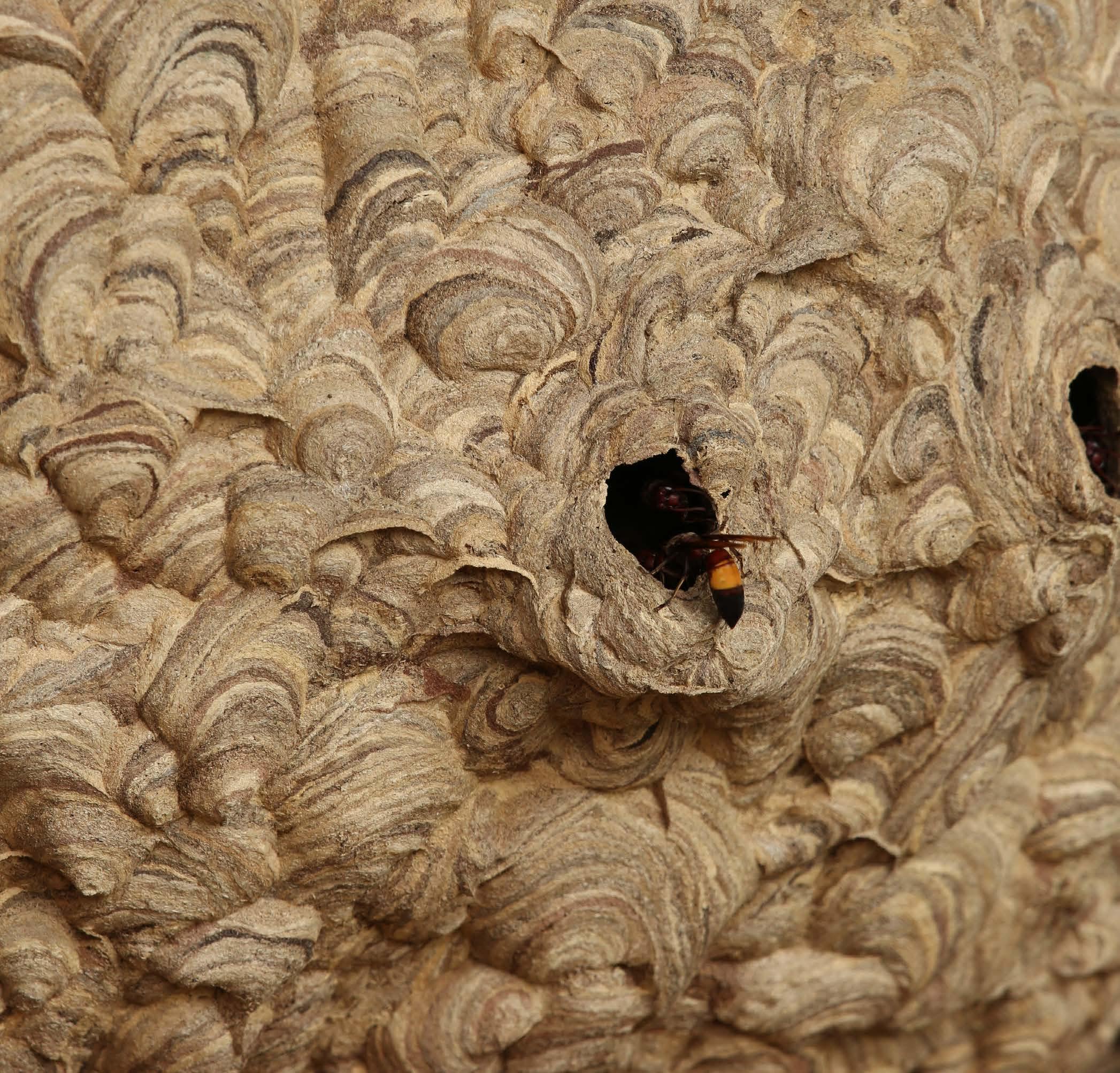
Its first biodiversity survey in 2010 was followed by a second two years later, which found that the number of species had increased significantly – evidence of a satisfactory outcome to the programme. TTE PLC Estates was also quick to recognize the importance of obtaining international advice and recognition to strengthen its conservation efforts, and was the Third company in Sri Lanka to obtain Rainforest Alliance Certification in 2011. The company, by 2012 had implemented the Rainforest Alliance Sustainable Agriculture Programme throughout all of its high-grown estates and several of its low country estates, with strict guidelines on the implementation of best global practices in environment, ethical and social justice.
In addition, all of the company’s tea factories are now certified to the standard of ISO 22000 Food Safety Management Systems, and are also endorsed by the Ethical Tea Partnership of the United Kingdom (ETP-UK).
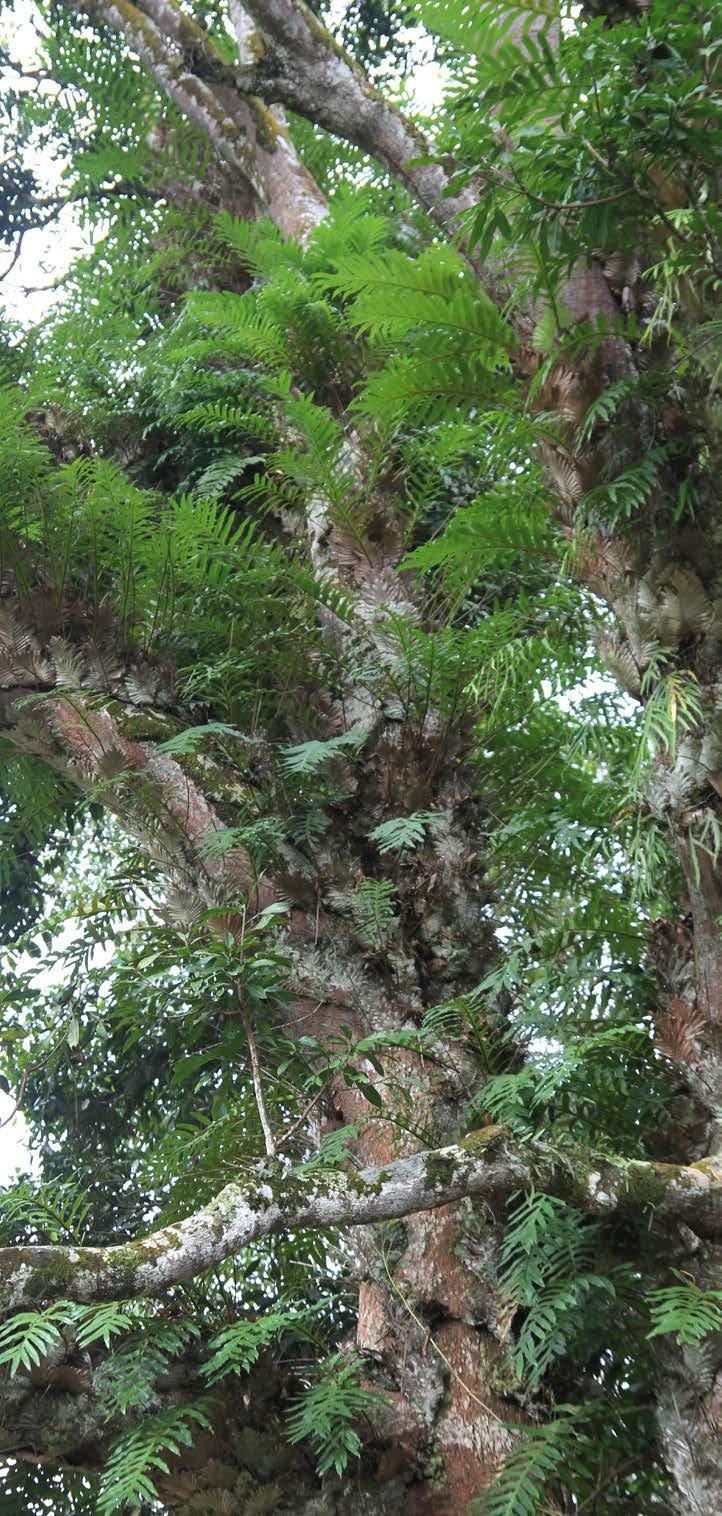







The estates are endowed with diverse ecosystems and habitats consisting of lakes, ponds, streams, wetlands, swamp and marshes, waterfalls, riparian habitats, eco-forests and Eucalyptus forests. All these habitats provide sanctuary for the precious biodiversity within estates. The lakes and wetland store rainwater and provide much needed seepage water essential to maintain the ground water table, regulate atmospheric temperature and also the splendour of the ecosystems.
Through the Rainforest Alliance Programme, we have identified 244 hectares as biodiversity conservation areas and necessary initiatives have been implemented to protect and conserve these blocks to enrich the biodiversity value of our estates. All estates have undertaken biodiversity surveys by professional bodies and are aware all faunal and floral species available within estates. The studies have revealed that habitats within estates provide unique niches and support maintenance of natural diversity of estates.

Megalaima flavifrons
The biodiversity surveys carried out within our estates reveal that there are over 220 faunal species, both vertebrates and invertebrates – mammals, birds, butterflies, dragonflies, amphibians, reptiles, fish, crabs and land mollusks living within our estates. Our estates are also habitats to over 140 species that are categorized as endangered, threatened and vulnerable species as per the IUCN Red Data List published in 2012.
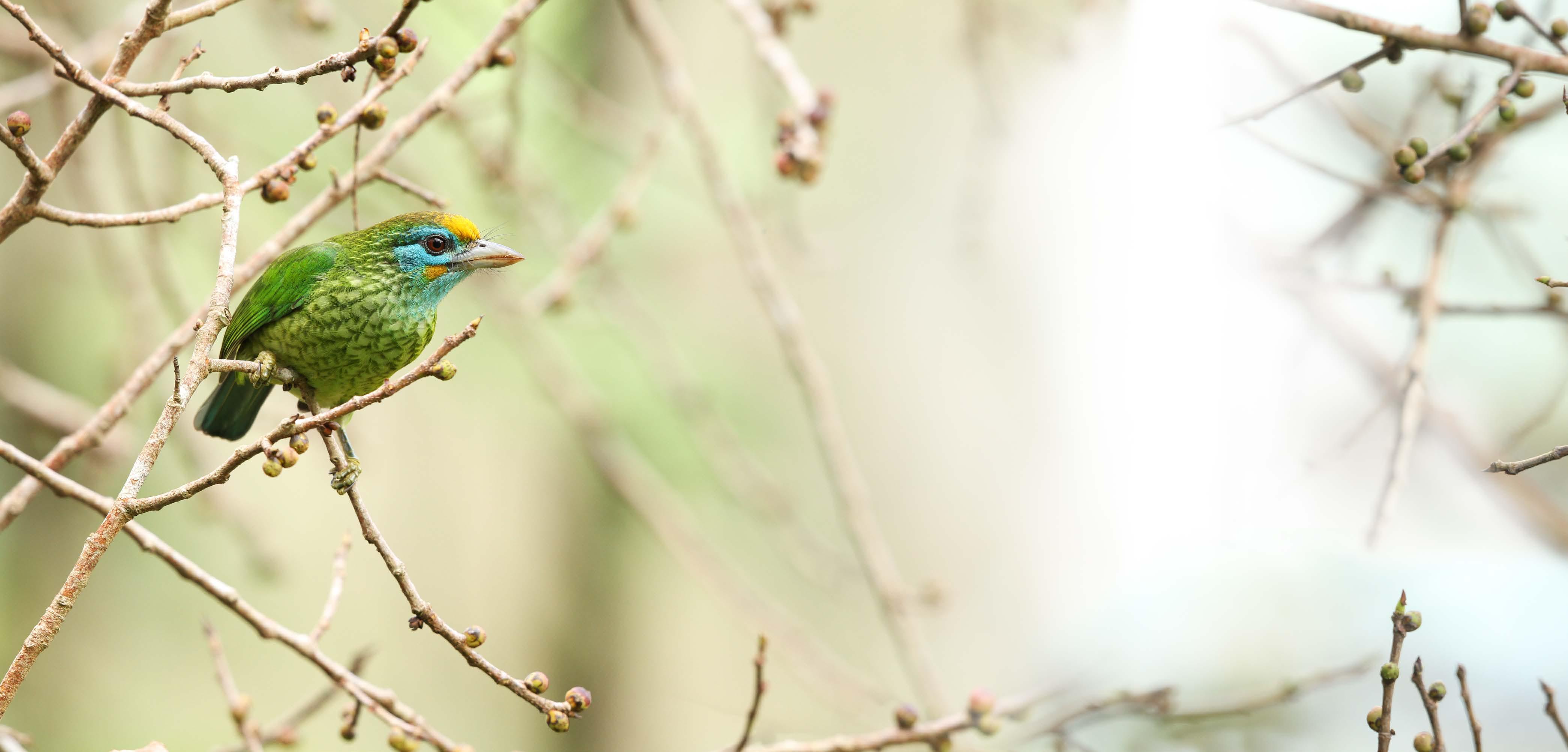
Conservation Status Globally Critically Endangered Vulnerable Near Total Threatened Endangered Threatened Taxonomic Group (GT) (CR) (EN) (VU) (NT)
Land Mollusks - 01 01 03 01 06
Dragonflies/ Damselflies - 02 09 09 04 24 Butterflies - 01 05 03 17 26
Freshwater Fish - - - 01 03 04 Amphibians - 01 12 04 03 20 Reptiles - - 05 02 06 13
Birds 01 - 01 08 25 35 Mammals - - 05 04 03 12
Total No.of Species 01 05 38 34 62 140
The follow up biodiversity survey conducted on Mattakelle, which was completed in April 2013, revealed that the diversity of invertebrates and vertebrates in Mattakelle has increased significantly, than the previous biodiversity survey conducted in 2010. The wetlands and streams of the estate protected the amphibians and birds species. Report also confirms that the ponds constructed for wastewater purification have created habitats important for aquatic life such as dragonflies, fresh water fishes and amphibians. During this survey, a number of observations were made on the threatened, endangered and rare species attesting the importance of the ecosystem and the effectiveness of the biodiversity conservation measures implemented on Mattakelle.
The agro-ecosystems on estates are dominated by tea (Camellia sinensis) fields with low shade trees such as Erythrina lithosperma, Calliandra calothyrsus, Gliricidia sepium and high shade trees Grevillea robusta and Albizia species. Tea fields are also entwined with species such as Bambusa vulgaris, Cassia spectabilis, Toona ciliate, Swietenia macrophylla, etc. Vetiveria zizanoides. Arachis pintoii have been planted intensely to prevent soil erosion and conserve the vulnerable highland ecosystems. In addition, eco forests and home gardens are planted with a variety of native and endemic tree species and fruit trees adding value to the profound biodiversity within estates.
Among many diverse species of flora amounting to 169 species including 49 endemic species, identification of a protected and endemic plant namely Oncosperma fasciculatum on Wattegoda, estate is noteworthy. Critically endangered floral species namely Diyapara (Dillenia triquetra), Ruk (Horsfieldia iryaghedhi), Madu (Cycas zeylancus) and Gal Demata (Impatiens repens) have also been identified at Kiruwanaganga and Deniyaya. Ginihota (Cyathea crinita), Vewal (Calamus zeylanicus) two endangered species and many other vulnerable species too have been identified during the Kiruwanaganga and Deniyaya surveys and these estates can be proud to be the custodian of such profound biodiversity.

All water sources and water bodies within estates have been identified and mapped. Our water sources are well protected with live and mechanical fences, meshes and tree species such as Terminalia arjuna (Kumbuk), Albizzia, Calliandra calothyrsus, Gliricidia sepium etc., which have been planted for conservation of these sources. Water quality in all such drinking water sources which amounts to 147 is tested annually for required parameters.
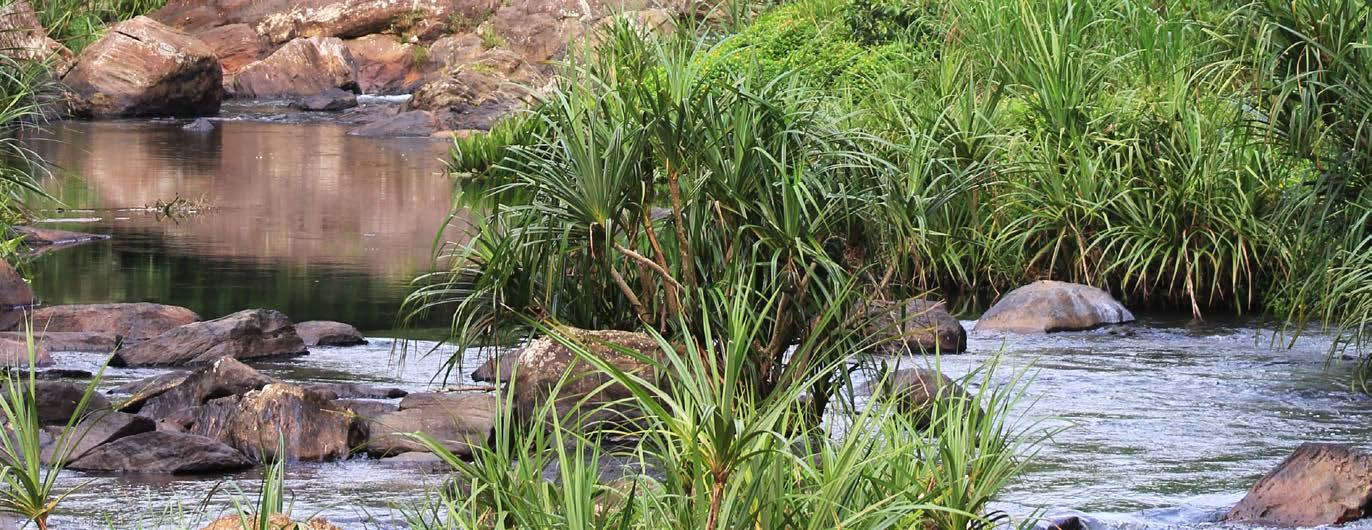




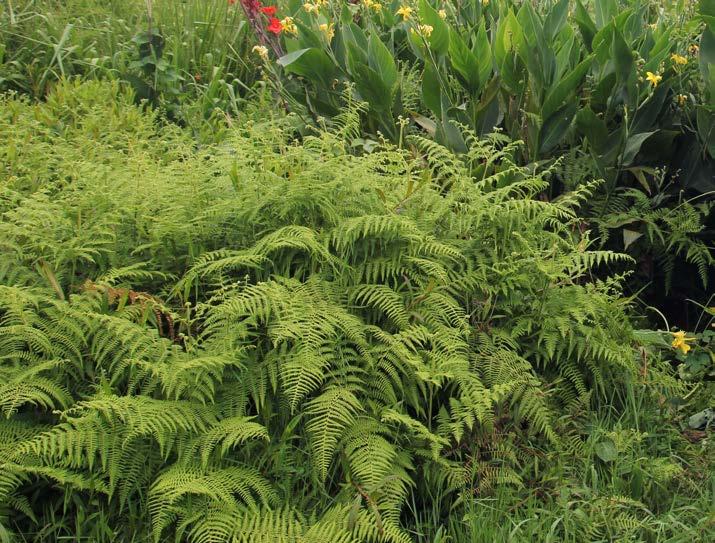

Rainwater harvesting is done through many lakes, ponds and wetland areas available on estates, which are all well protected. Ponds are constructed at strategic locations for rainwater harvesting and sustaining the ground water table. Chemical free buffer zones with specified distances and vegetative barriers have been established around all water sources and water bodies to prevent any contamination due to agricultural operations.
As a key initiative of the Rainforest Alliance Program, 82 wastewater purification systems with sedimentation and filtration tanks have been constructed on all estates to treat factory and domestic wastewater. These systems have enabled the factories to treat wastewater prior to discharging as well as to purify domestic wastewater generated. In addition, we have promoted bioremediation through conservation of natural vegetation as well as by planting recommended species such as Canna generalis (Canas), Tithonia diversifolia (Wild Sunflower), Vetiveria zizanoides, Wedelia trilobata in channels through which wastewater is flowing. These initiatives ensure that factories and domestic wastewater generated on estates is adequately purified before releasing to the natural water bodies and this aspect is verified by annual laboratory testing of samples for required parameters.
Estates have established Rainforest Educational and Information Centres (REICs) as a key strategy to drive and sustain the conservation programme. These centres, which are well equipped with books, leaflets, brochures, posters and other educational materials are effectively used to train and educate the community on the sustainable concepts, strategies and activities under the ten principles of sustainable agriculture including ecosystems and biodiversity management, water and wildlife conservation and integrated solid waste management.
Company has also established links with environmental professionals and Institutes to keep abreast with new knowledge on best environmental conservation practices. During April 2014, TTE PLC joined Biodiversity Sri Lanka, which is a platform aimed at providing valuable services to Sri Lankan business entities engaged in sustainable development and conserving the natural resources and biodiversity of our country.
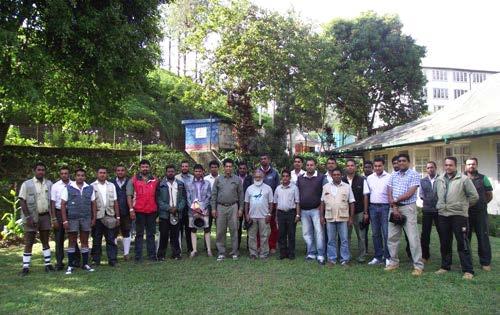


Demonstrating its commitment towards, energy conservation, TTE PLC Estates has introduced a ranking system among estates to encourage Energy Efficiency. Each estate’s energy usage is measured and monitored on a monthly basis. Demonstrating the commitment towards reducing the carbon footprint, Greenhouse Gas emissions of each estate and the company is measured and monitored to achieve continuous improvements.
The company has also focused on the production of clean energy, and has set up three hydropower plants on Radella, Somerset and Palmerston estates, which generates 1.8 megawatts of power and supplement the national grid.
Indian Fritillary Argynnis hyperbiusA main driving factor in conserving biodiversity has been a set of stringent measures to reduce the usage of agrochemicals. At present, only five agrochemicals are used on the company’s estates, and even these are highly regulated in order to minimize the usage. The danger posed by agrochemicals is driven home to estate workers, not only through continuous awareness programmes, but also by the construction of designated chemical storerooms and washing rooms in every division, which includes separate areas for storage of agrochemicals and Personal Protective Equipment (PPE). Chemical free buffer zones have been established around all water bodies, ecosystems, frequently travelled roads and areas of human habitats to ensure protection of people and the environment within estates.

With the objective of consistently increasing the tree canopy cover, enhancing the biodiversity value and achieving environmental and business sustainability, the company encourages its estate managers to enrich areas as forest cover and to carry out tree planting campaigns using indigenous and native varieties. Increasing canopy cover at Plantation, household and community level will have immediate benefits to the estate communities in regulating local temperatures, changing the micro-climate, conservation of water resources and enhancing ecosystem services.
While Talawakelle Tea Estates continuously improves its integrated conservation programme, another major effort has been launched for the protection of the Kikiliyamana Forest Reserve, which directly borders several of the company’s estates. The protection of this large forested area, apart from fostering all types of wild fauna and flora that inhabit it, also serves many other purposes, including the protection of water sources for the company’s estates and towns such as Talawakelle, which flow from the mistshrouded mountains of Kikiliyamana and Great Western, which at 2,237 metres (7,339 ft) and 2,212 metres (7,257 ft) respectively are the 5th and 6th highest peaks in Sri Lanka. These mountains are extremely rich in biodiversity and are the source of the plentiful sightings of sambur, Barking Deer and other wildlife. The company has enlarged the forest area of Kikiliyamana, by reserving a 32-hectare plot from Great Western estate located directly below the forest reserve, creating a forest reserve of its own.

The company’s conservation programme has faced many challenges along the way.

The Agrochemical usage, which is a serious concern, is critically addressed with the objective of minimizing the usage and adverse environmental and health impacts. The reduction of weedicides and pesticides requires increasing vigilance on the part of estate managers in order to manage weeds and control pest attacks using additional manual labour.
A key challenge, particularly among the three low-country estates, is land encroachment by villagers for a variety of reasons including setting up shops and stalls by roadsides and extension of home gardens.
Unsustainable agricultural practices by vegetable farmers in upcountry estates are resulting in degradation of water tables within estates and the estate managers encounter an uphill tank to protect the environment and water bodies from the activities of these farmers.
The integrated conservation program and the improvements in the environment has led to a proliferation of wasp nests and increase in wasp population, which is a hazard to the estate employees particularly the female pluckers and protecting them from wasp attacks has become a new challenge to the management.
Adverse impacts of climate change causing extreme weather conditions is a major challenge the estate managers are grappled with. As a result, estates have now become vulnerable to landslides, storm damage, droughts and also experiencing water scarcity. These adverse conditions will naturally impact livelihoods as well as biodiversity conservation programs on estates.
Grey Hornbill Ocyceros gingalensisDespite the challenges, the conservation programme is continuously building upon its years of success, with new facets being added. Three estates – Great Western, Radella and Wattegodde – have been included in Talawakelle Tea Estates’ proposed project in partnership with IUCN to further protect and enhance the Kikiliyamana Forest Reserve. Scientists from International Water Management Institute (IWMI) have visited many estates and are in the process of developing an Integrated Water Resource Management Program for estates to ensure water sustainability.
All employees and the community are fully trained and empowered through regular educational and awareness programs and employee committees. High employee engagement and commitment has been the hallmark of the successful outcome achieved by Talawakelle.
With an integrated long-term approach that continuously gathers strength, TTE PLC, will continue to pioneer environmental conservation, and gain further recognition so richly deserve.

Dilmah Conservation and Kahawatte Plantations PLC are on a mission to enhance the watershed and streams flowing through Hunuwella Estate in the Ratnapura District, to provide a better environment for all the species that live there and in particular to protect two globally endangered species of dragonflythe Rivulet Tiger (Gomphidia pearsoni), and Wijaya’s Scissortail (Microgomphus wijaya).
 KAHAWATTE PLANTATIONS PLC
KAHAWATTE PLANTATIONS PLC
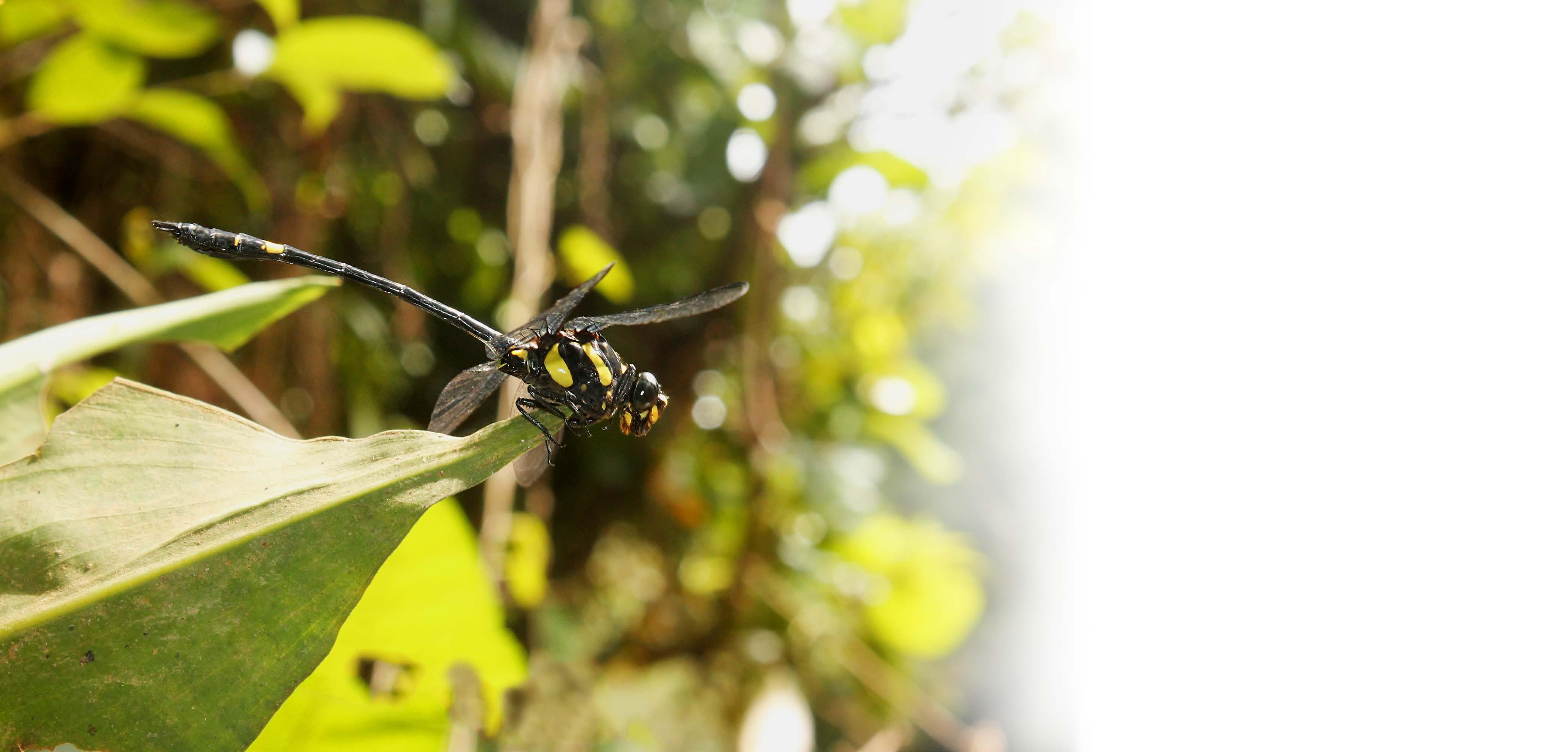
In 2012, an extensive survey of biodiversity of the Hunuwella Estate in the Ratnapura District discovered two colourful and exotic species of dragonfly that are considered globally endangered (IUCN Red List 2012) - the Rivulet Tiger (Gomphidia pearsoni), and Wijaya’s Scissortail (Microgomphus wijaya). The survey was part of a wide-ranging effort by Dilmah Conservation aimed at documenting and protecting biodiversity on the estates of Kahawatte Plantations PLC, whose parent company is the MJF Group.
Realizing the significance of the discovery, and the importance of the watershed of Hunuwella Estate, the International Union for Conservation of Nature (IUCN) which had carried out the survey, proposed enhancement of the watershed area of this estate, and more specifically, the protection of two globally endangered dragonfly species.
Hunuwella Estate is located at Opanayake in the Ratnapura District of the Sabaragamuwa Province, approximately three and a half hours’ drive from Colombo on the A4 Highway, past Ratnapura and Pelmadulla, 134 kilometres from Colombo. The estate is comprised of 991.5 hectares of land area, and has three main crops – rubber, tea and cinnamon, with smaller extents of coconut and macadamia nuts. Of this land area, 10% has been reserved as forest land. The height of the estate varies from 100 to 900 metres, since it is located on a set of hillsides, with its factories being located at 183 metres. It contains three rubber factories, one tea factory, and a cinnamon processing centre which handles the processing of cinnamon for the entire region.
The area is indeed rich in biodiversity. The 2012 survey by IUCN found 282 species of flora, of which 21 were endemic and 15 classified as threatened; and 214 species of fauna, of which 37 were endemic, 13 classified as nationally threatened, and 24 as near threatened. This study discovered the presence of the two endangered dragonfly species on the estate.
More recent field visits to the Hunuwella Estate by IUCN scientists in March 2015 discovered two more species of Odonates (dragonfly) which are listed on the IUCN Red List 2012 as globally critically endangered – the Sri Lanka Lyrate Grappletail (Heliogomphus lyratus) and the Sri Lankan Nietner’s Grappletail (Heliogomphus neitneri).
So far, Hunuwella Estate has been found to be home to 28 species of dragonfly of which 17 are endemic; 89 species of butterfly of which 8 are endemic and five listed as endangered; 7 freshwater fish species, of which 2 are endemic; 10 amphibians, of which 7 are endemic and two endangered; 13 reptiles, of which 4 are endemic; and 38 species of birds, of which 6 are endemic.
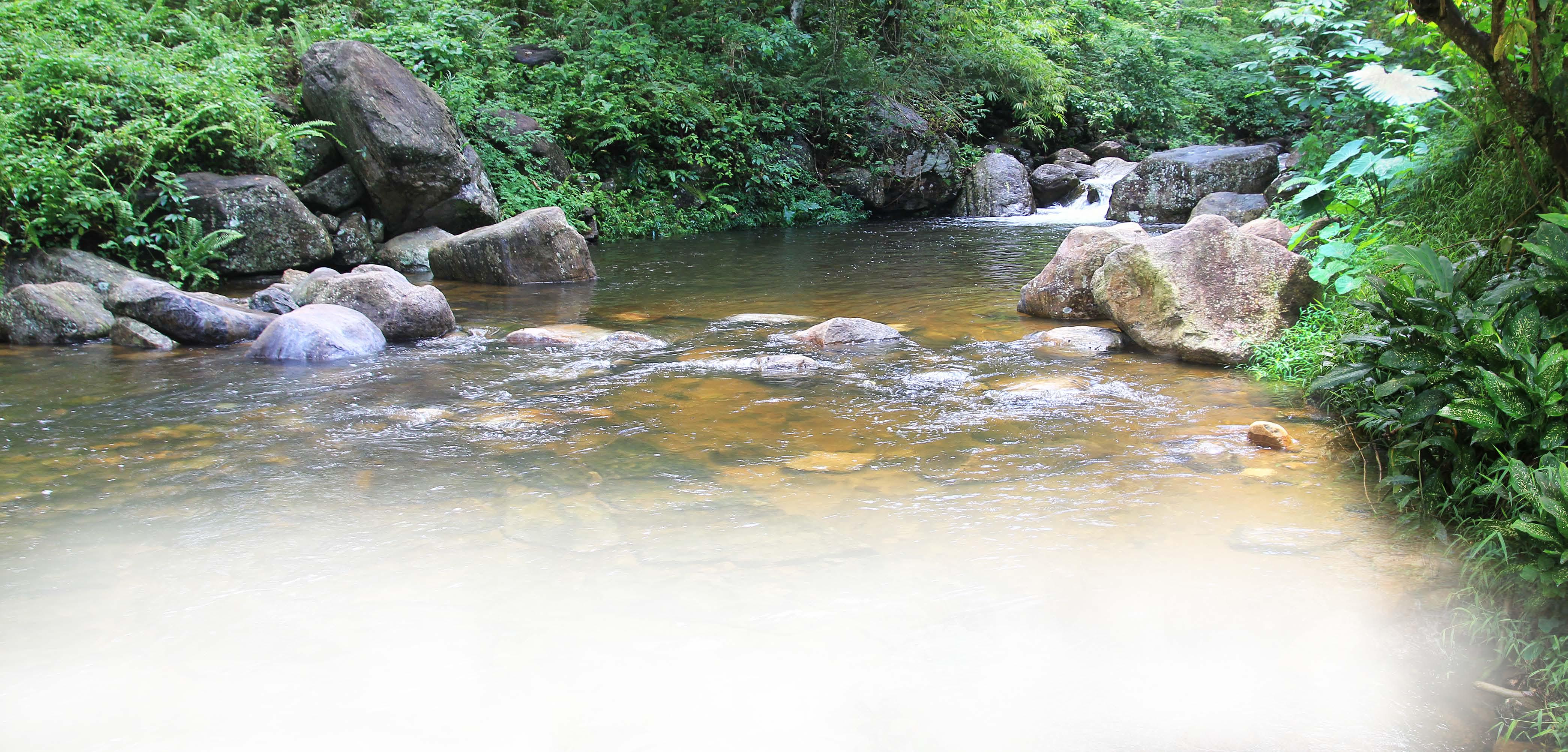
Strange perhaps that an estate bordering such a heavily travelled highway could harbor such a diverse range of species. Yet, the estate is in fact located in a region that has some of the largest numbers of species in Sri Lanka, when one considers that above and beyond the foothills of the estate lie the mountains of the Peak Wilderness, while much of the estate has a breathtaking view of the Rakwana Range to the south.
Dragonflies are an important indicator of the quality of any environment. They are extremely sensitive to environmental threats, and their presence generally indicates that the particular area is fairly pristine, and generally free of pollution and chemical contamination.
The project is part of the wide ranging effort launched by Dilmah Conservation and the MJF Group to enhance the sustainability of biological resources throughout its estates. It entails the enhancement of the watershed of Hunuwella Estate, and in particular the six selected streams, in an effort to protect the two endangered dragonfly species. The project has been designed by IUCN, which is carrying out intensive surveys and observations, and working to a detailed plan over a period of one year (2015) to enhance the biodiversity in and around the streams. Teams from IUCN carried out an year-long pilot project with the aim of providing technical support for the estate’s management for the long-term.
The management of Hunuwella Estate is also heavily involved, and will indefinitely continue various steps being taken during the project, which is operating on two of the estate’s seven divisions – with five streams in Division 2 and one stream in Division 4.
The area above the estate contain fairly thick forests, which serve as a catchment area for many streams. The six selected streams flow down from the Bambarabotuwa Forest on the slopes of the Pettigala Mountains, part of the Hunuwella-Kabaragala Mountain Range, and fall into the Wee Oya, a tributary of the Kalu Ganga, one of the largest rivers in Sri Lanka by volume of water.
The region receives a plentiful amount of rainfall from both the Southwest Monsoon and the Northeast Monsoon, and also has two inter-monsoon rain periods each year. Thus, four of the streams selected for the project are perennial, while one is somewhat seasonal and one other is highly seasonal. January and February are usually the dry months of the year at Hunuwella Estate.
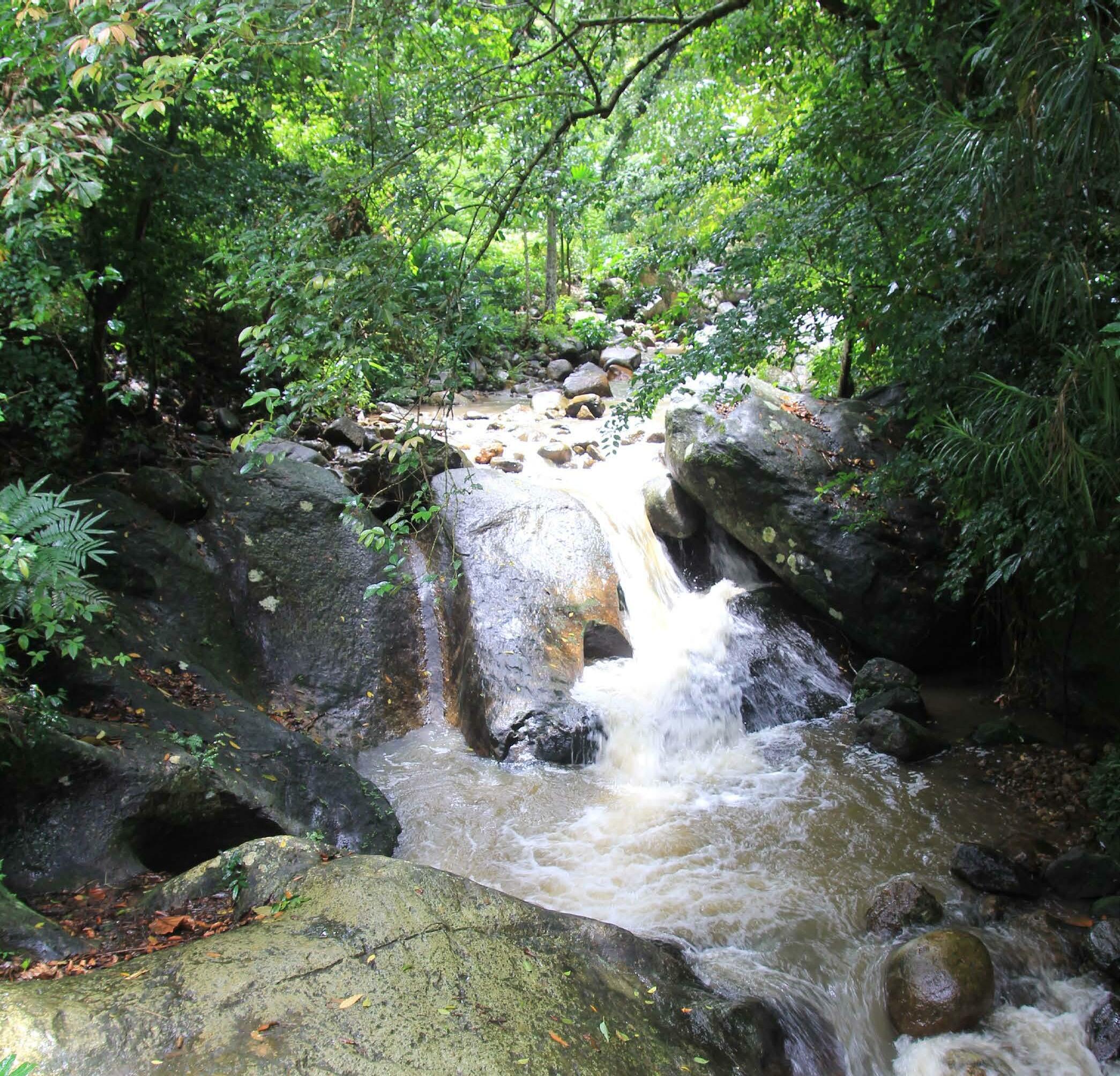
The project has multifaceted methods to protect and enhance the estate’s watershed. Small ‘check dams’ have been erected at strategically situated sites on the streams, in order to slow the flow of water, make a series of cascading pools on each stream, and create a more suitable habitat for dragonflies to lay eggs. The check dams also serve to prevent soil erosion, which is a significant concern for the water quality of the estate.
The extent of shade along the streams is being increased in stages, first by fast-growing species such as Glyricedia and Eramudu (Erythrina variegata) on 5-metre wide belts on the banks of the streams, and later by the introduction of endemic and forest species. These are being propagated in a special nursery on the estate. The pilot project entails the planting of 4,000 plants of more than 20 different endemic and forest species.
Along some areas of the streams, the project aims to recreate swamp forests on lands which had earlier been converted to paddy cultivation. This is creating a habitat for dragonflies and also freshwater fish and crabs.
A considerable amount of research has gone into the selection of trees and plants to grow alongside the streams, with forest species from the area itself being identified, so as not to disturb the balance of nature.

The water quality of the streams are being monitored by the IUCN team and a team from the University of Sabaragamuwa for such aspects as pH, dissolved oxygen, electrical conductivity, temperature and total dissolved solids. Chemical-free buffer zones have been created in the proximity of the streams, to further enhance water quality and reduce chemical risks to both fauna and flora. Extensive awareness programmes have also been carried out for estate workers, which serve both their own safety, and the importance of protecting biodiversity.
One of the streams is being maintained as the ‘control’ stream for the project, to serve as a comparison for future surveys which will track the progress of the project.
An extensive project has also been carried out to educate tea smallholders in the region on the urgent need for biodiversity conservation. While Sri Lanka’s upcountry tea plantations are dominated by large tea estates which are managed by the major plantation companies, plus a few government-managed estates, low country tea plantations are increasingly dominated by smallholders.
It is estimated that smallholders contribute as much as 85% of low-country tea production. These smallholders range from individuals and families with a few perches of tea plants in home gardens, to larger operations on several acres of land. In the Ratnapura District, the smallholdings are spread throughout the region. There is therefore a very real need for tea smallholders to be educated on conservation, and play a more active role in this wide-ranging effort to which many corporate players in the country’s plantation sector have pledged their support, and many of whom are already playing an active role.
Thus, the conservation efforts of Dilmah Conservation and Kahawatte Plantation PLC are ranging far wider than its own estates, and its awareness campaigns are reaching a much larger audience.
Planting of 4,000 plants of more than 20 different Endemic and forest species.
The effort to protect and enhance the flora along the six streams has led to a significant and quite visible increase in the extent of forested areas, and the number of species living along these streams. Simply put, protecting two species has led to better protection for every species of fauna and flora in the watershed of the estate.
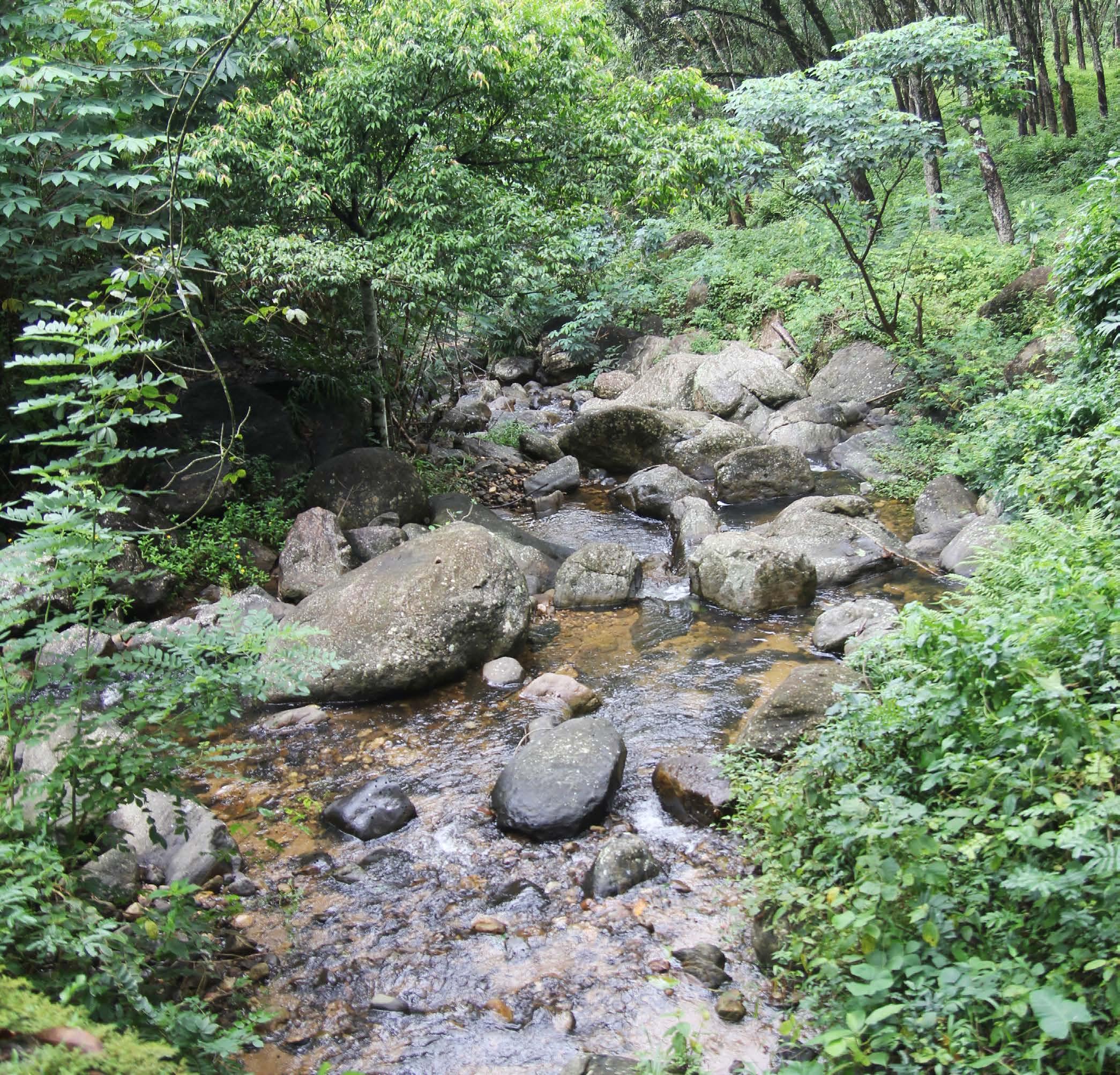
A key challenge facing the management of Hunuwella Estate is the habit of villagers to travel across the estate roads to reach settlements that are located on the other side of the estate. This results in considerable disturbance of the tranquility of the estate. It has also meant that a significant amount of littering takes place along the roads, and especially at scenic locations near the streams, where villagers stop to enjoy the scenery and partake of alcohol.
This is a particular problem for Stream 3, which is the largest stream and flows across a causeway on a widely used road, creating a popular spot for bathing and merriment. Ironically, it is on this stream that Rivulet Tiger and Wijaya’s Scissortail, the endangered species of dragonfly, are most often found, which increases the need for conservation efforts on this stream.
Another key challenge is land encroachment by villagers, and there are currently about 200 such instances at Hunuwella Estate. The estate management is actively working through the state to evict the encroachers through legal means, which is a time consuming process. It is also one which has to be carried out with care, since this could arouse bitterness among villagers towards the estate management, which would pose a long-term threat to the entire conservation programme.
The ownership of land areas along the streams is also an issue, since some villagers have been cultivating paddy and minor crops in some areas along the streams for many years. Relocating them is a sensitive issue, since some have been cultivating those particular locations for decades.

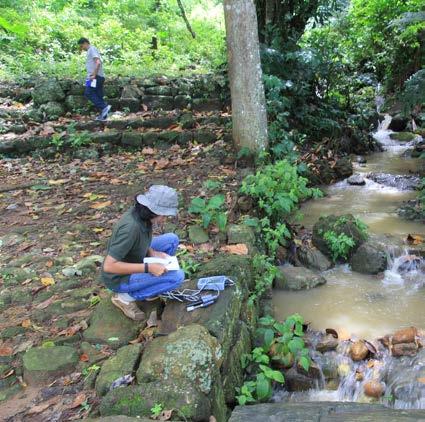

The management of the estate has carried out several awareness programmes to demonstrate to villagers and estate workers the importance of conservation. These programmes will be continued indefinitely, as the project requires a significant level of community participation.
“The success of such a programme depends to a large extent on the commitment of the plantation company estate itself, which ensures that each estate’s management will view it as a key result area. At Kahawatte Plantations PLC, our conservation efforts flow from the Chairman of Dilmah MJF Group, through Dilmah Conservation, down through the estate management to the workers. In short, the philosophy reaches every nook and cranny of the company and the estates, which is the only way to ensure its long-term sustainability,” remarked Damith Mohottige, Manager of Hunuwella Estate, in conversation with the writer.
“Once IUCN completes its one-year programme, it is up to us as the estate management to continue the project and ensure its long-term sustainability. We are well-placed to do this, as we have been working closely with the IUCN teams throughout the project,” added Mohottige.
The present pilot areas being developed along the six streams are likely to be expanded and more sites added, as the project continues. However, there are no immediate plans to expand the number of streams, since the six streams which have been chosen for the project up to now, were carefully selected as being most likely to have a positive impact on biodiversity conservation.
Further extensive surveys will also be needed on a periodic basis, to more exhaustively document the estate’s fauna and flora, and more importantly, to gauge the success of the ongoing programme but Dilmah Conservation’s focus on conservation will ensure the success of its wide-ranging efforts to protect biodiversity, especially throughout the estates of Kahawatte Plantations PLC, which augers well for the dragonflies of Hunuwella.
Lyrate Grappletail - Heliogomphus lyratus
Talgaswella Estate has been transformed from an ordinary estate into a model site which has been highly effective at blending traditional plantation practices with sustainable ecotourism.

As one of the most profitable of Elpitiya Plantations, Talgaswella is source of much pride for the company. The estate is a model plantation in many respects, containing all five major export crops – Tea, Rubber, Coconut, Cinnamon and Oil Palm – all grown in commercial quantities.
Located in the Galle District, the 2,600 acre Talgaswella Estate is easily accessible as it is just 23 kilometres (14 miles) from the Kurundugahahethekma Interchange of the Southern Expressway. The estate is now being marketed increasingly as an ecotourism destination, chiefly by the tourism arm of the holding company of Elpitiya Plantations, Aitken Spence PLC. It is a common destination for visitors from Aitken Spence hotels in Ahungalla, Aluthgama and Kalutara, and also for local visitors from Colombo.
While the sustainability programme encompasses all aspects of operations on this estate, the major attractions for tourists are centered on Talgaswella Lake, a permanent water body of 17 acres that is teeming with avian and aquatic life, and a small surrounding forest area. Talgaswella’s forest patch is not part of a contiguous forest area. However, the estate lies in proximity to a larger forest patch to the northeast, between Talgaswella and the Hiniduma Christian shrine, and other forested areas on the borders of the neighbouring Sabaragamuwa Province.
The origins of Talgaswella Estate dates back to 1920, when it was founded by Carson Cumberbatch & Co. Ltd. Its first superintendent, a British Planter named Nikoli, arrived two years later. The estate’s original crop was sugarcane, with a sugarcane crushing plant set up on the premises with machinery from England. Rubber was introduced in 1928 and a sheet rubber factory constructed in the estate. Cultivation of tea commenced in 1932, and the local workers were supplemented by labourers who migrated from India. Their descendants form the bulk of the estate’s workforce today.
The estate is not without a dramatic history, as its third superintendent, an Englishman named Roger Blumer, was murdered in his bungalow by thieves in 1934. The gang members were subsequently tried and hanged.
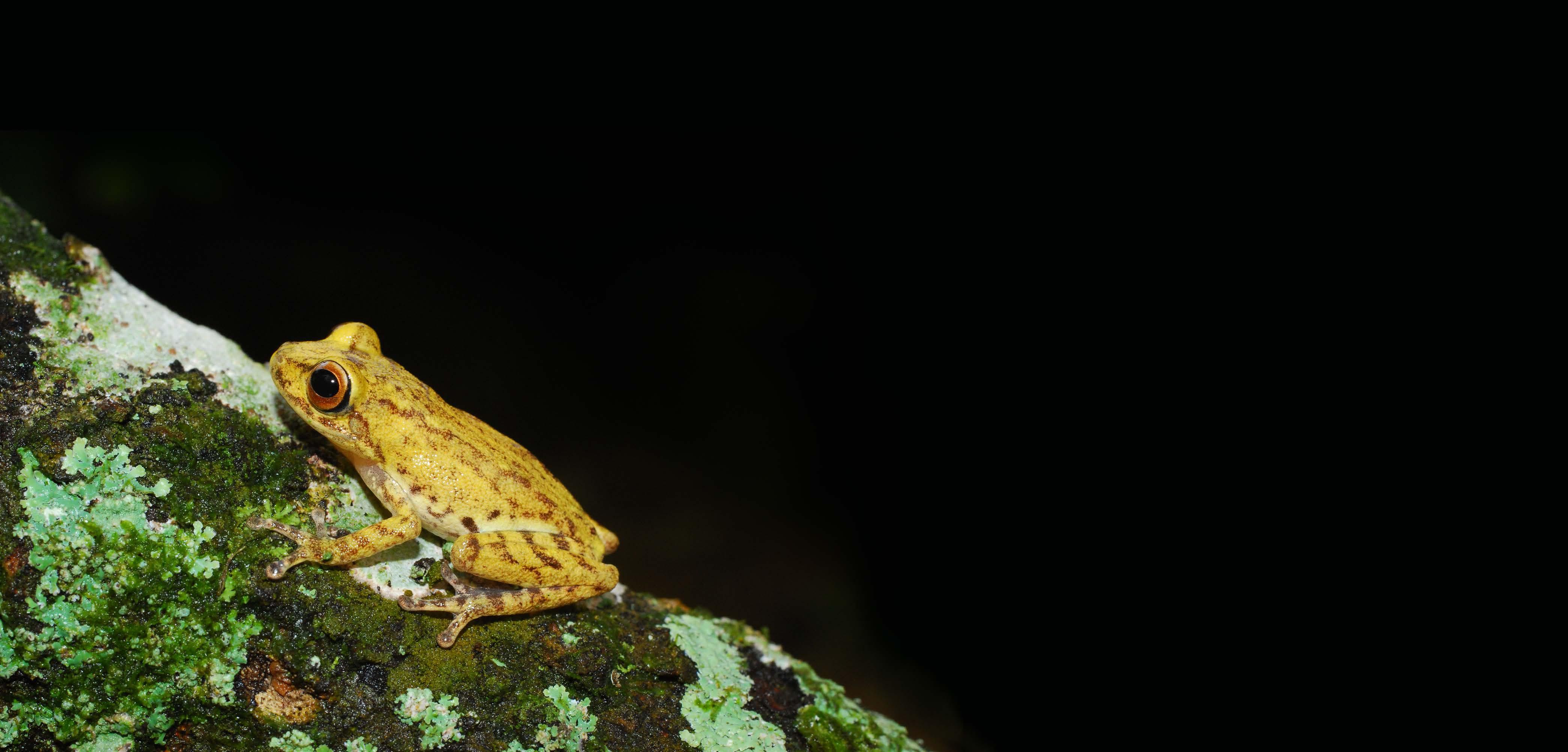
A biodiversity baseline survey of Talgaswella Estate which was carried out in August 2013 by the Wildlife Conservation Society of Galle (WCSG) found a high level of diversity in fauna. The WCSG survey noted: “This scenario is remarkable since the area belongs to a tea estate that has not been reported authentically from Sri Lanka”.
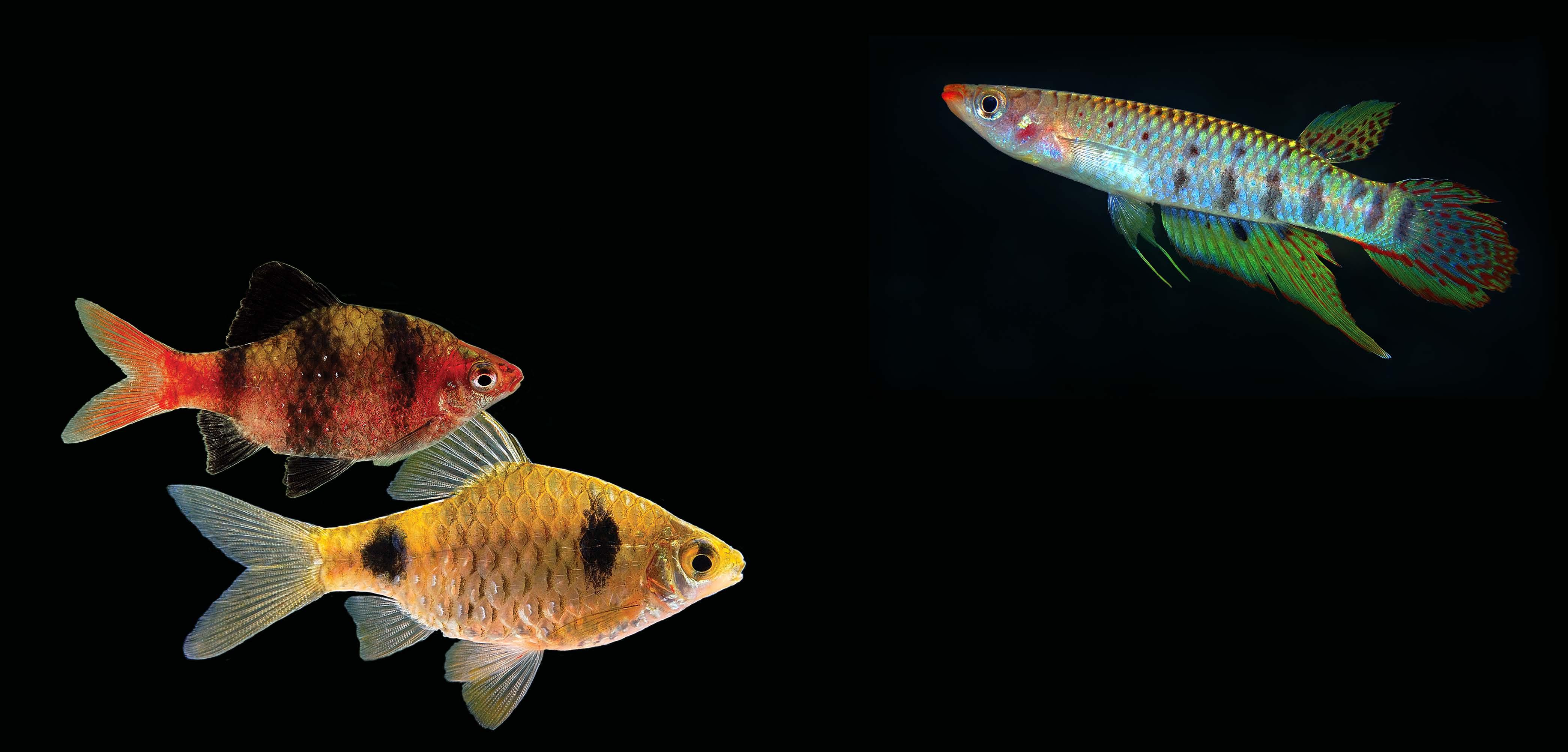
The lake itself was found to be teeming with 20 species of freshwater fish, 3 of which (Two spot barb, Black ruby barb and Werner’s killifish) are listed as vulnerable on the IUCN Red List 2012. The WCSG survey observed: “Though this is an open area which lacks large vegetation, the reason for the high number of freshwater fish species may be due to the presence of a permanent water body in the estate”.
The forested areas around the lake, together with two islands and a peninsula which protrudes into the lake, create a tranquil experience of nature, more often found in larger wetland areas. More than 50% of the banks of the lake are fully forested and the estate’s management has declared these areas as ‘no-go zones’, which prevents trespassing and protects the forest from human activity.
Tourists are given the experience of being paddled around the picturesque Talgaswella Lake on a ferry powered by two oarsmen. The lake is up to 50 feet deep in the centre, but the meandering arms between the islands and the peninsula are less than 10 feet in depth.
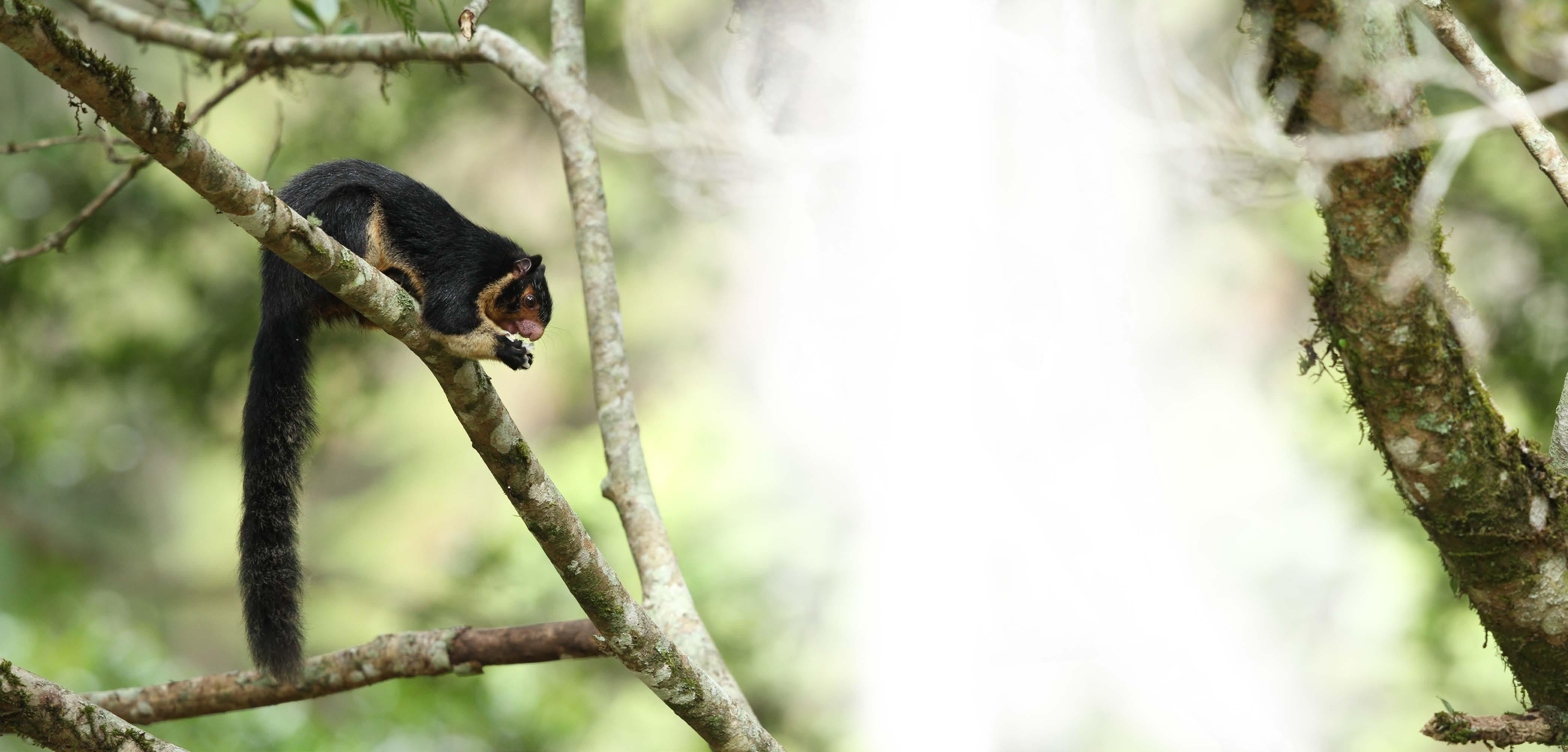
The lake is a haven for bird life. The WCSG team recorded 58 species, of which 3 are endemic. These include 4 species of eagles, 3 species of owls, 4 species of kingfishers, and 3 species of parakeets. Visitors can catch a glimpse of many of them on the tour. The lake with its surroundings is a picture of perfect tranquility, only disturbed by the shrill cry of a Serpent Eagle.
The estate is home to 21 species of mammals, 3 of which are endemic. These include the Rusty spotted cat, Fishing cat, Wild boar, Sambur, Mouse deer, Pangolin and Common musk shrew. However, more visible around the lake are the Purplefaced leaf monkey, Sri Lanka toque monkey, Black-naped hare, Giant squirrel, Palm squirrel, Fulvous fruit bat, Long-eared vampire bat and 2 species of Mongoose. 1 species – the Otter – is listed as endangered on the IUCN 2012 Red List, while 4 others (Giant squirrel, Rusty spotted cat, Fishing cat, Purple-faced leaf monkey) are listed as vulnerable.
The lake is also home to 2 species of freshwater crab, both of which are endemic, 2 species of freshwater turtles (1 endemic), and 10 species of amphibians (6 endemic and 1 listed as vulnerable – Golden frog).
More visible are the 9 species of butterfly, 1 being endemic, and 16 species of dragonflies, of which 3 are endemic. The WCSG survey noted: “Diversity of dragonfly fauna is very high. This may be due to the presence of a permanent water body. The higher number of dragonfly fauna is remarkable since it is an indicator of the (low level of) pollution of the environment”.
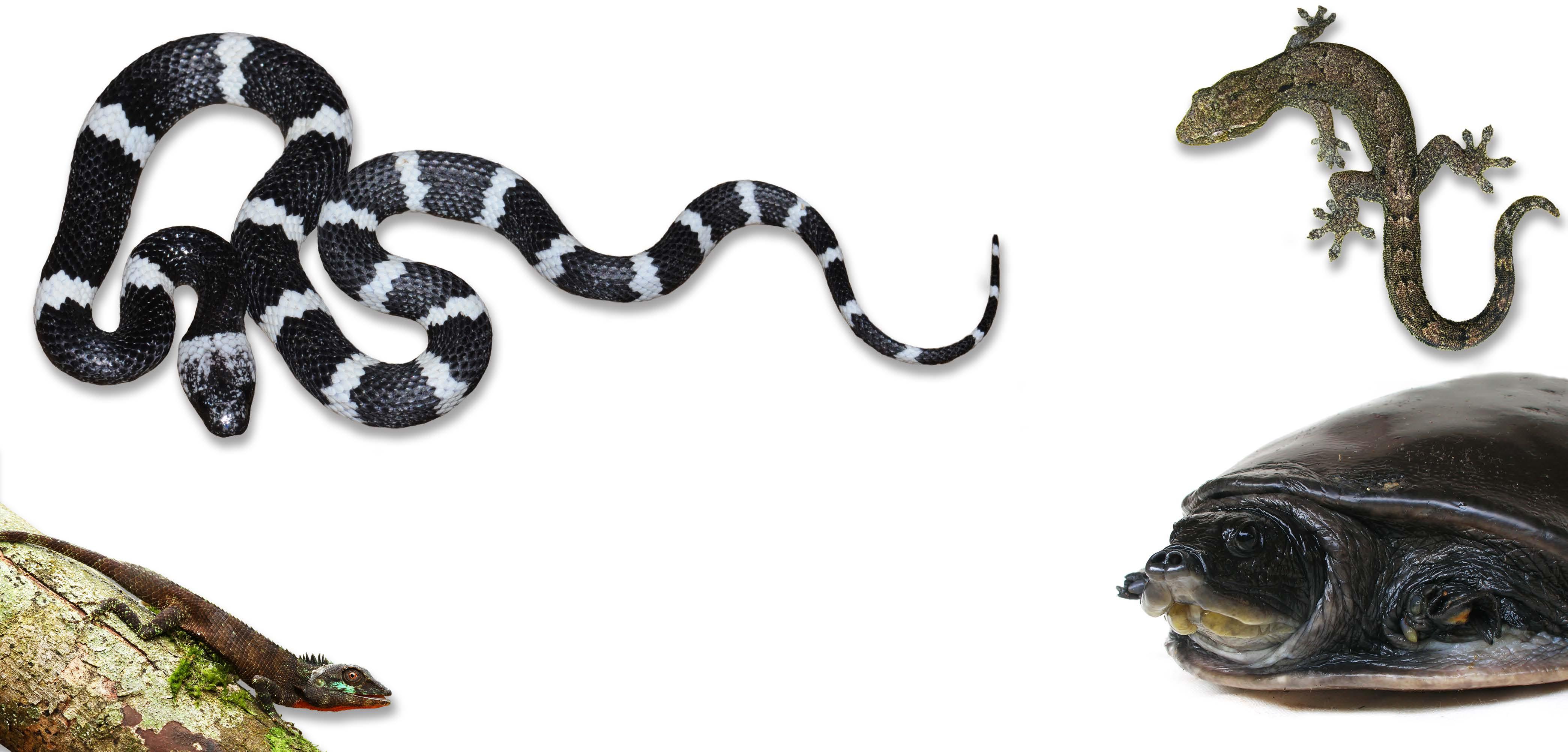
Reptiles are found in abundance, of which 5 are endemic, 1 endangered (Mourning gecko) and 3 are vulnerable (Sri Lankan wolf snake, Whistling lizard and the Flapshell turtle). The estate is home to no less than 20 species of snakes, 4 lizard species, 7 gecko species, 2 species of skinks, and 2 species of monitors. Perhaps of lesser interest to tourists, but nevertheless important indicators of the high level of biodiversity on the estate, are the 28 species of land snails (6 endemic, 6 threatened).
The estate management has made a determined effort to preserve the flora of the area, although the number of species is not high due to this being primarily a plantation environment. Of the 2 islands on the lake, 1 contains a herbal garden and the second, a fruit garden.


Thusith Wijekoon, Manager – Diversification Projects noted: “Talgaswella Estate is an integral part of a larger eco-tour that Elpitiya Plantations has structured for our foreign and local visitors, through the tourism arms of our group. This includes all amenities that are expected of a modern ecotourism programme, while immersing participants in an authentic experience that combines the charms of both the plantations and nature”.
For tourists, the best time to visit Talgaswella Estate would be towards evening, when hundreds of birds converge on the banks of the lake for a raucous gathering. However, a large number of cormorants, egrets and herons are present throughout the day, roosting on low-hanging trees on the banks and other vegetation which runs down to the edge of the water.
Apart from the charming boat ride through the forest, tourists are provided a complete estate experience which includes a tour of the estate’s tea factory and the five types of crops; and lunch or tea at its old style bungalow which has deliberately not been modernized in order to retain its colonial charm.

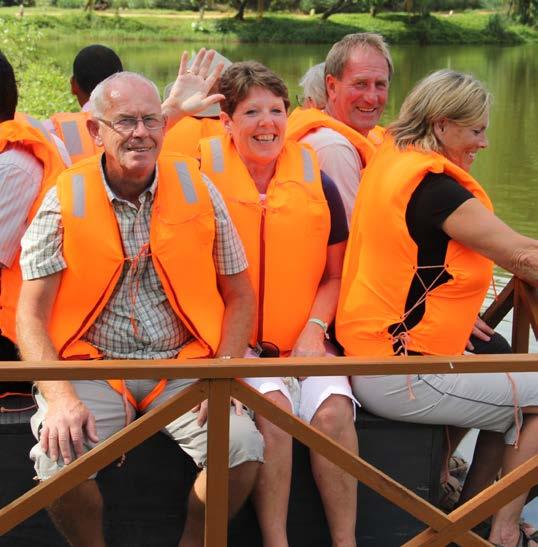
Neeshadha Perera, Executive - Business Sustainability & Certification Projects noted that visitors are so enchanted by the experience that several have pestered the company to sell them the bungalow, which it has respectfully declined to do!
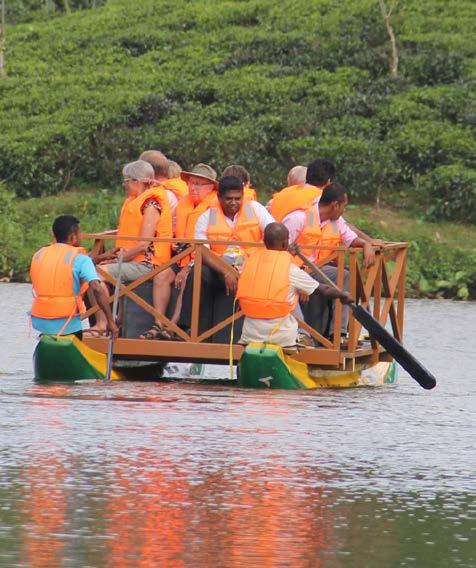
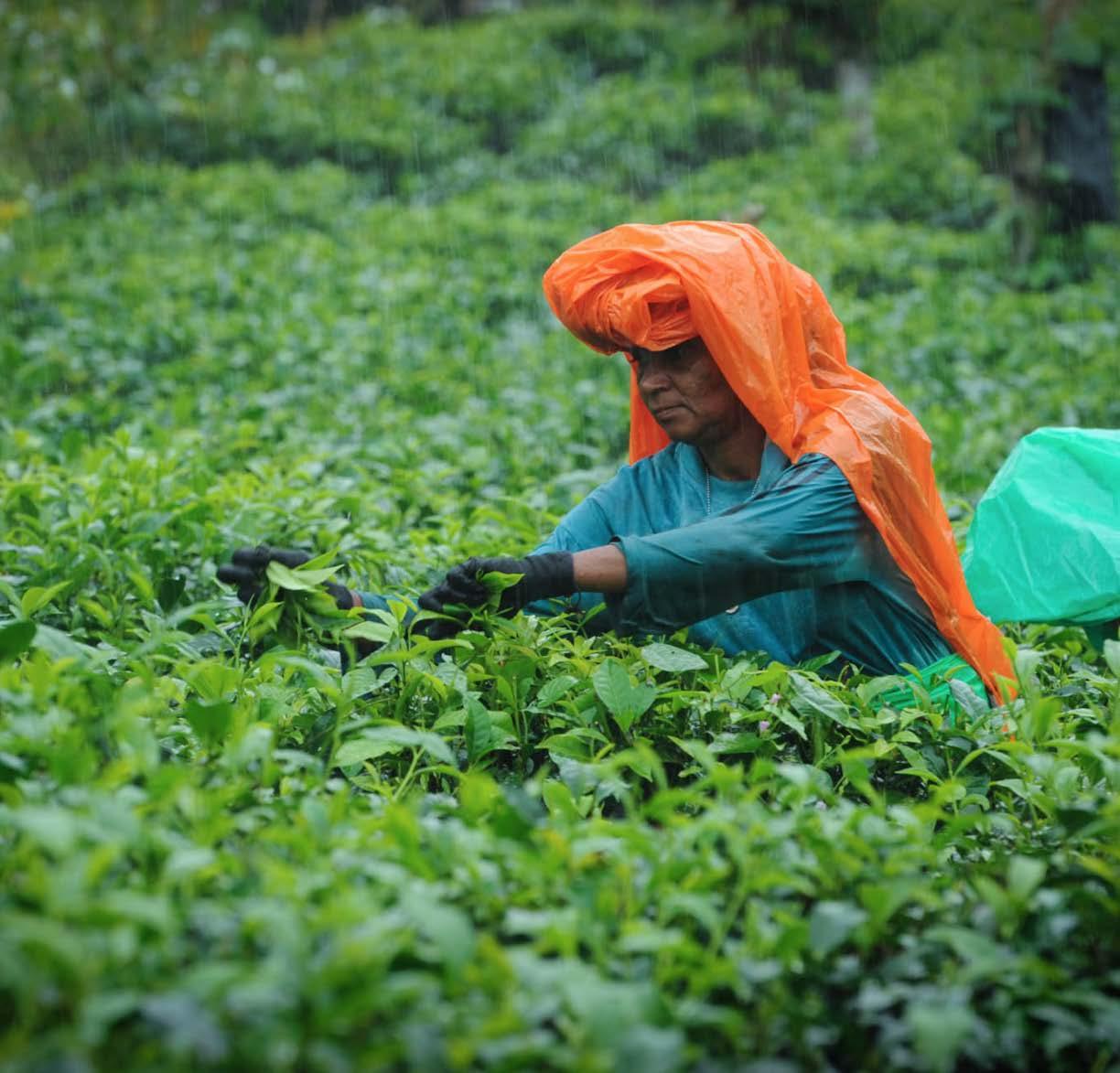
The conservation programme is part of a larger, more wide-reaching programme to improve worker efficiency and loyalty to the company. A workforce which a decade ago had been known for its indiscipline was provided greater welfare benefits and training which enhanced their sense of belonging to the company. This included working hand in hand with workers’ cooperative societies on various social programmes, including battling the chronic alcoholism that is prevalent in Sri Lanka’s estate sector.
A key factor in the success of the Talgaswella Estate’s conservation programme has been the integration of the estate’s workforce and the entire estate community into the effort, a serious effort given that the estate community has a population of 1,800.
Geeth Kumara, General Manager of Talgaswella Estate, who has been in charge of this estate since 2006 and has been responsible for executing the sustainability programme, observed (in conversation with the writer) that they faced a host of challenging issues which have been successfully dealt with through awareness creation and inculcating best practices among the estate community.
“We carried out several programmes to educate the estate community and residents of nearby villages on the need for conservation,” noted Geeth Kumara. “These programmes taught them of the need to protect forest areas, and inculcated general behavior patterns on respecting nature, including reducing pollutants, recycling all possible materials, etc.”
“Our alcoholism rate was over 90% a few years ago. But we have worked hard with the estate community and am proud to say that it is definitely less than 50% now,” observed Geeth Kumara, pointing to the many banners and signs on the estate and in the tea factory that create awareness of the anti-alcohol drive.
The WCSG survey contained several recommendations to protect the biodiversity of the estate, which the estate management has taken very seriously. These include planting of fast-growing shade trees, minimization of agrochemical use, strict control of other pollutants, and steps to control alien invasive plants.
The conservation programme’s fruit garden was in fact launched with a dual purpose, since the island it was located on had been at the time used by local moonshine operators to store liquor. Once the island’s undergrowth was cleared for planting fruit trees, and it became frequented by the fruit garden’s workers, the moonshine operation ceased to exist.
A rather quaint but highly effective tactic is to have every child of estate workers plant a tree on the estate on his or her birthday. The children, and their parents, are able to witness the growth of the tree, and are entitled to the fruit from their own tree.
Another key issue, that of providing sufficient days of work for the daily-paid workforce, was successfully overcome by training workers in tending to different types of crops. With the estate having diversified into five major cash crops, there is now always work in some of them when intensive labour is not required for others.
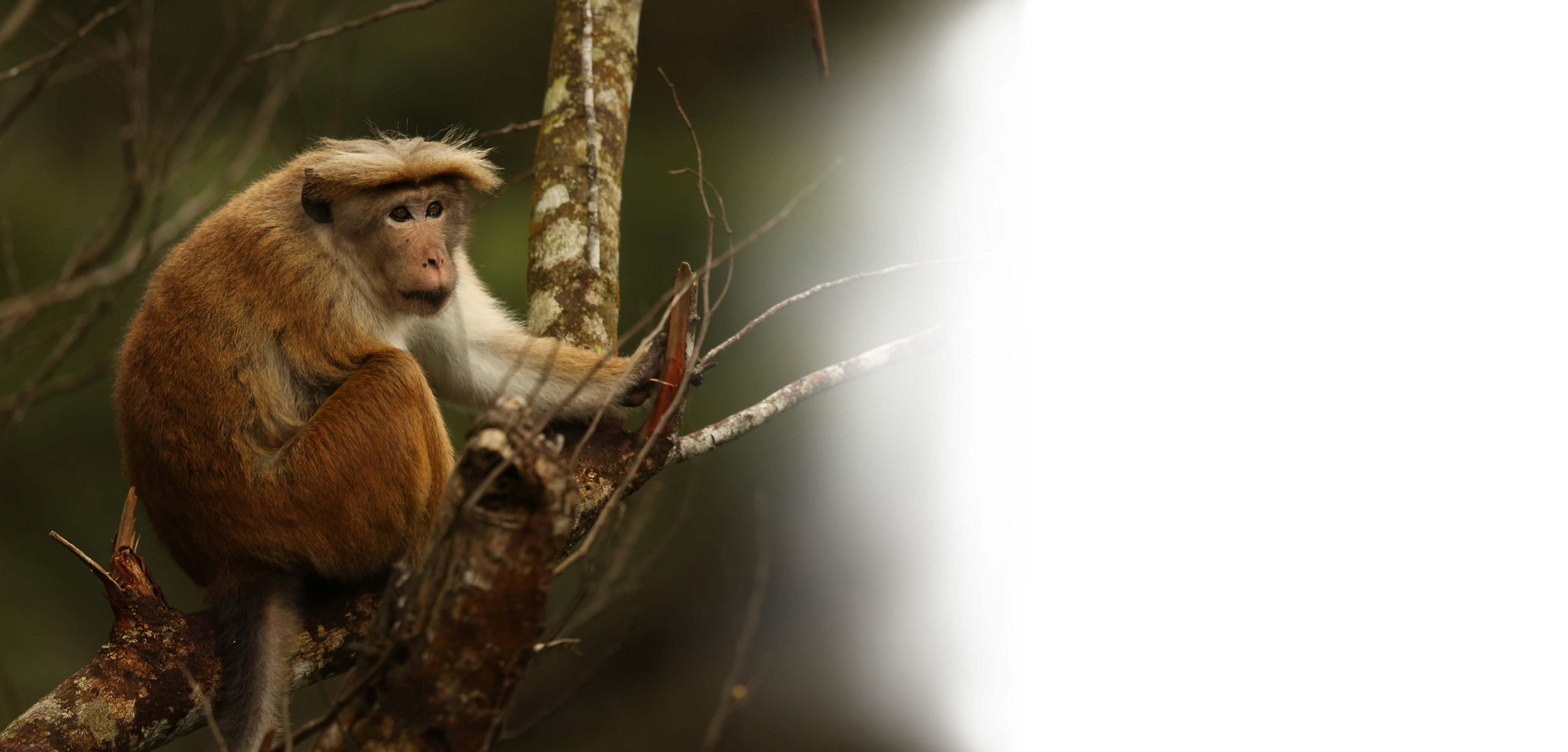

The conservation programme has been successful in raising awareness of many facets of conservation, from forest protection to recycling. It has also provided employment for a limited number of people, in the herbal garden, fruit garden and the lake’s ferry.
Evidence of the remarkable level of success of the integrated conservation programme is seen in the complete lack of polythene on the estate, not even for banners and streamers for festivals and funerals. “We have managed to eliminate the use of polythene even at all election meetings on the estate during the last four elections,” said Geeth Kumara.

The programme was transformed into an ecotourism experience through a structured effort that commenced in February 2013 and brought the first tourists to the estate in September of that same year. The tourism brochures of Elpitiya Plantations and Aitken Spence now extensively feature Talgaswella. The tour of Talgaswella Estate is part of the PATA Gold Award winning ecotourism excursion of Aitken Spence.
The success of Talgaswella Estate’s ecotourism model has clearly been a key factor for Elpitiya Plantations PLC to continue and expand its conservation efforts throughout the company’s estates.
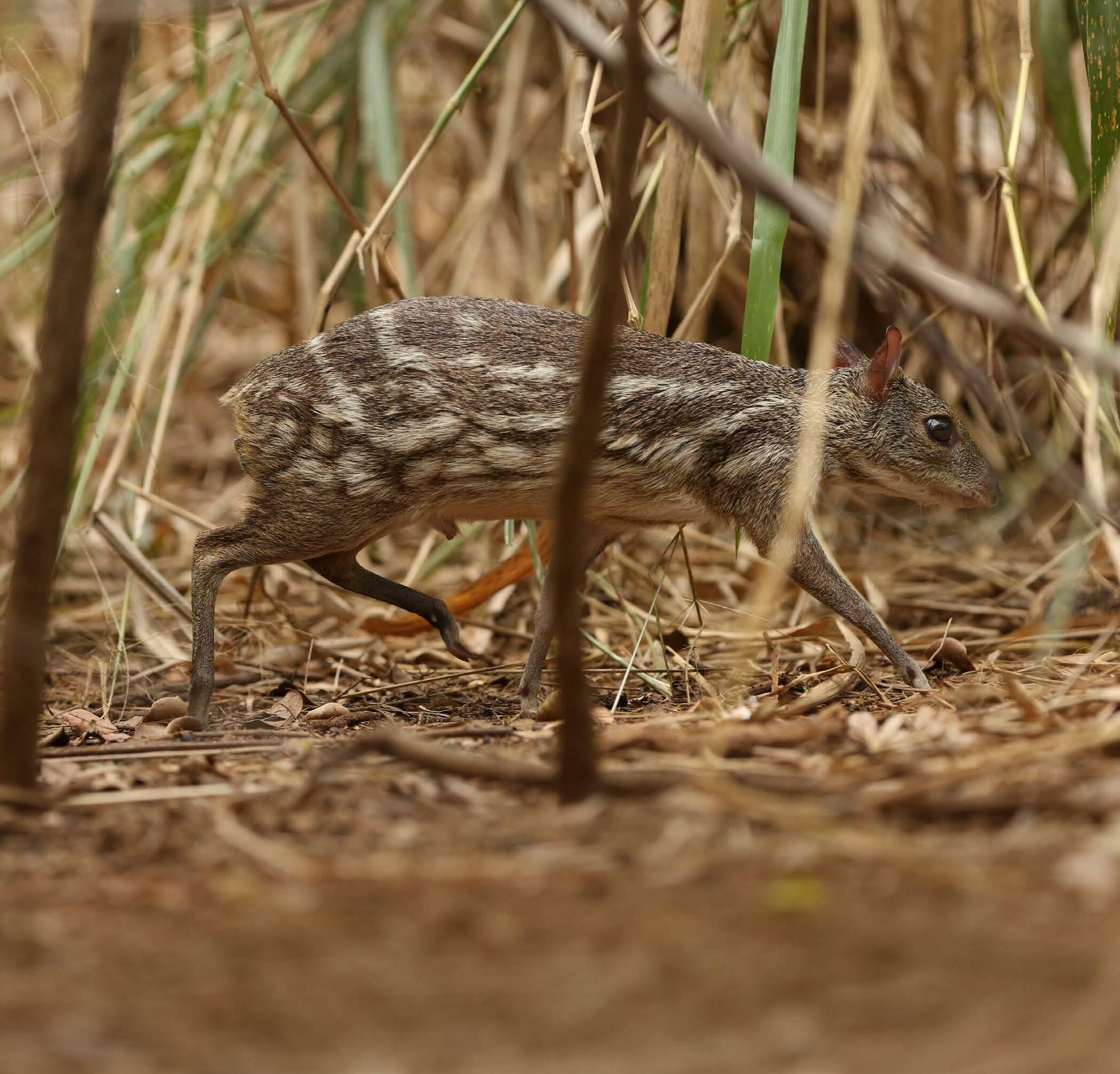
The success of the Talgaswella Estate programme has led Elpitiya Plantations to plan similar but distinct conservation efforts in other estates within the company. Foremost amongst these is a planned conservation area in the nearby Bentota Estate into which an ambitious programme is to be launched to reintroduce Hog Deer (Axis porcinus). This critically endangered species is now found only in sparse populations across the northern part of the South Asian and Southeast Asian region, including northern Pakistan, north India, Nepal, Bangladesh, Bhutan, Myanmar, and Cambodia. It is believed to have disappeared entirely from Vietnam, Laos and Thailand (it has recently been reintroduced to Thailand, and introduced in Australia and the United States).
It is believed to have been introduced to Sri Lanka within the last four centuries. Known locally in Sri Lanka as Wil Muwa or Gona Muwa, the Hog deer had been widely prevalent in the southeastern corner of the island, but deforestation and expanding human population had caused it to disappear throughout much of its earlier range. Being one of the most endangered of Sri Lanka’s several species of deer, it is currently found only in more distant areas of the southern province. Several efforts have been made to reintroduce it to its former habitats, with limited success. Elpitiya Plantations has already earmarked a land area for this purpose, and intends to introduce sufficient individuals for breeding to build up a significant presence of this species in the area.
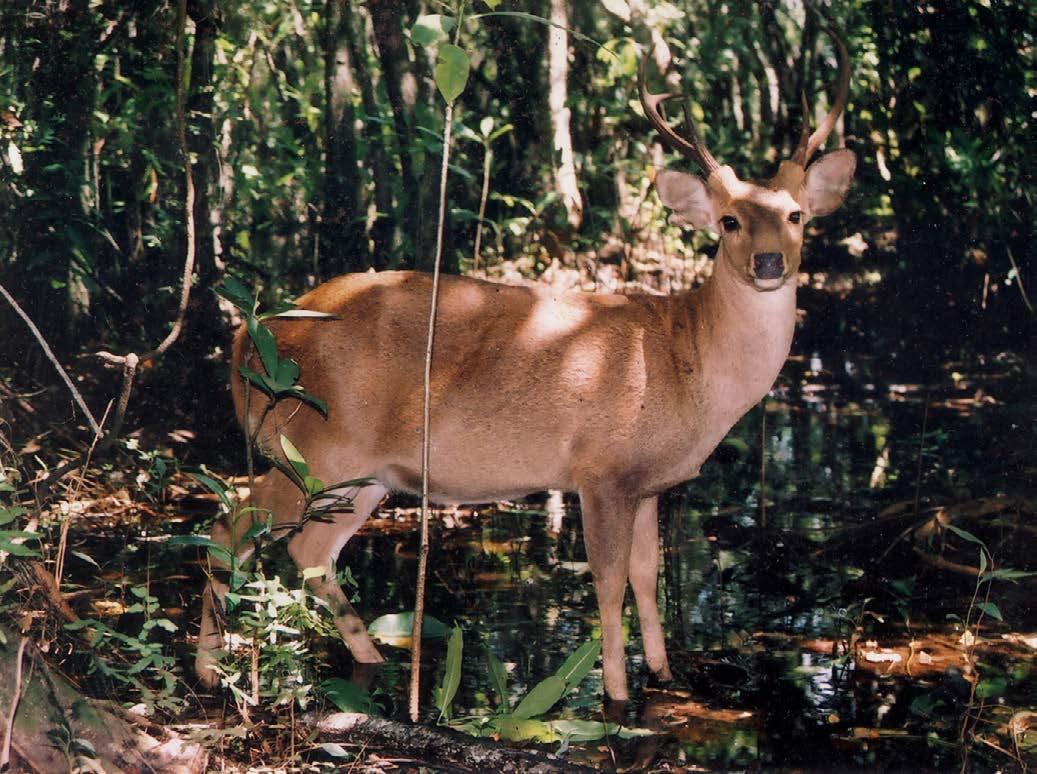


How Sri Lanka’s tea plantation companies are helping biodiversity thrive

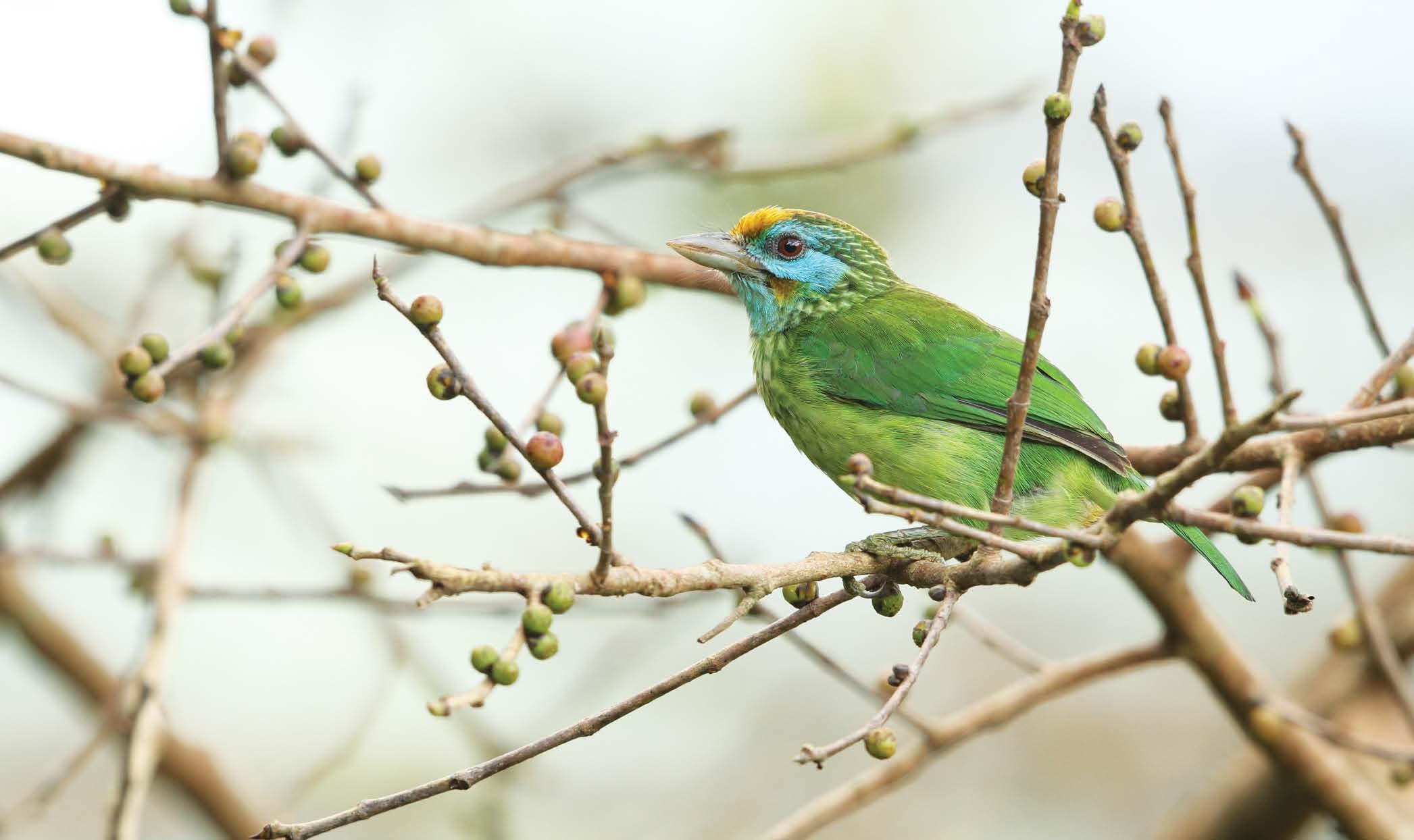
Biodiversity Sri Lanka’s first publication gives you a glimpse into biodiversity conservation efforts and best practices undertaken by our members within the plantations sector. The rich biodiversity of Sri Lanka’s wet-zone shines through in this Compendium of stories ranging from the smallest species of lichens to pioneering climate change research stations. We aim to mainstream the importance of biodiversity conservation into the private sector and this Compendium serves as an exemplary example of this, which we hope will serve as an inspiration to all that development does not have to intimate destruction of our natural landscapes.
Biodiversity Sri Lanka – Making the environment everyone’s business.